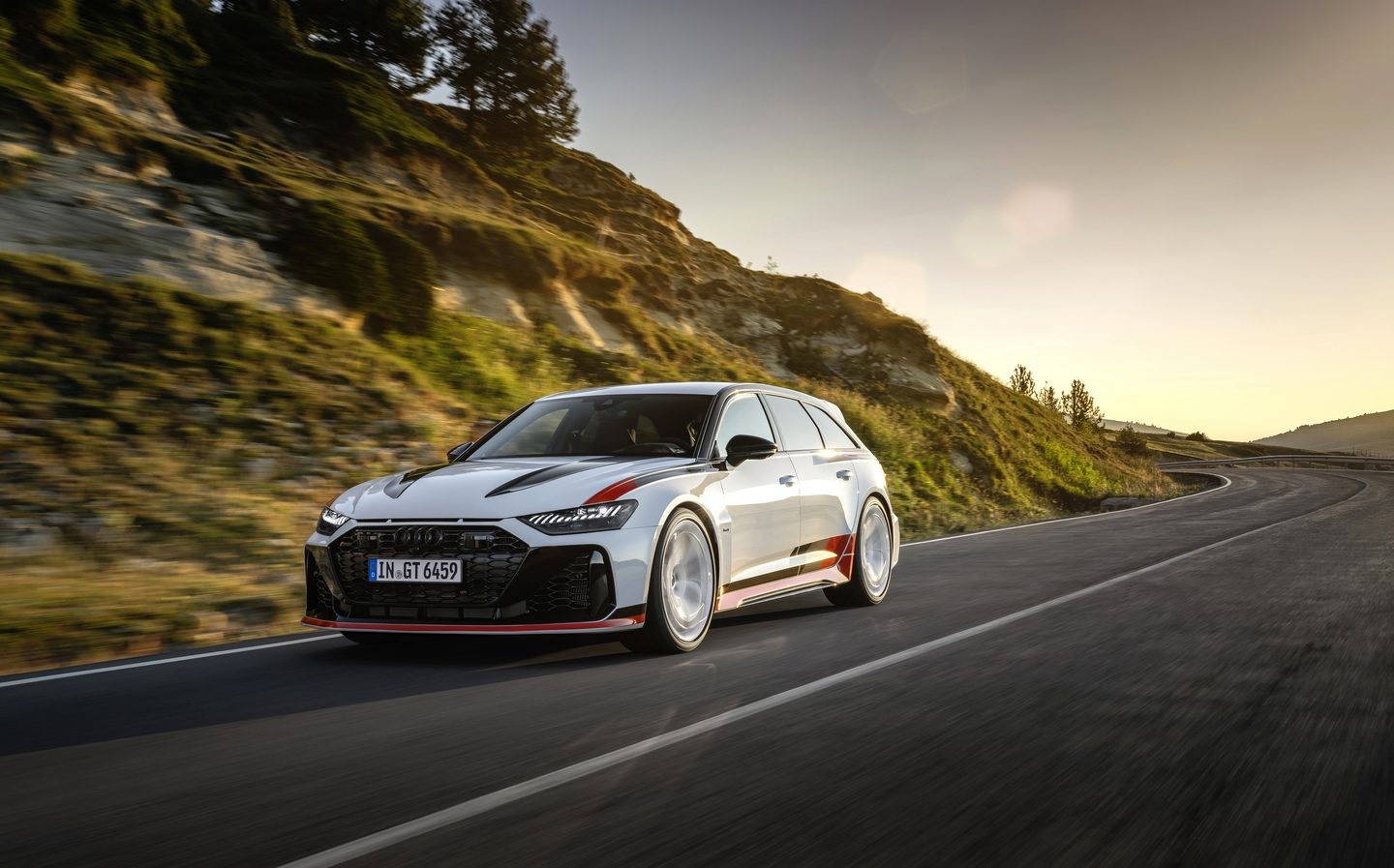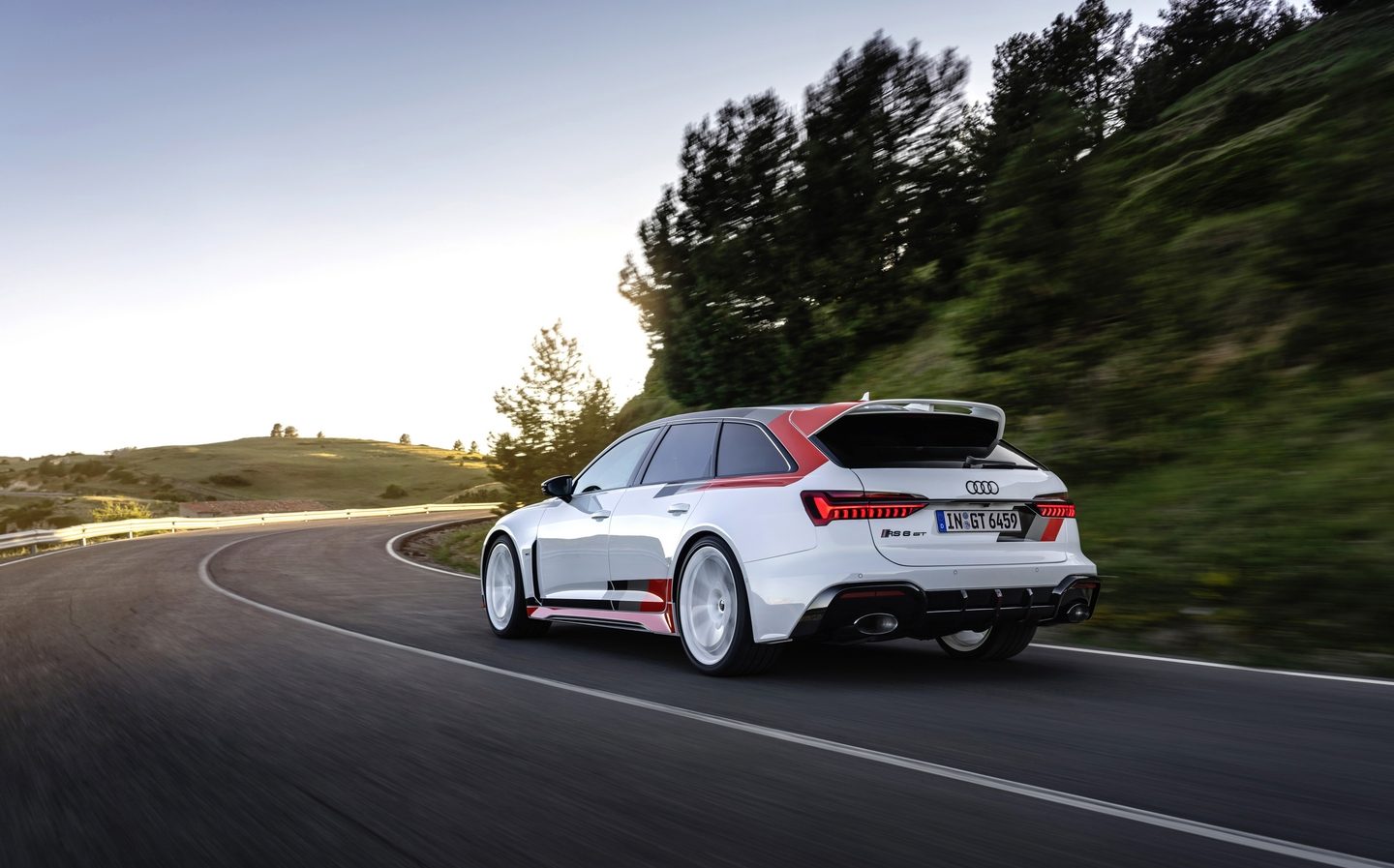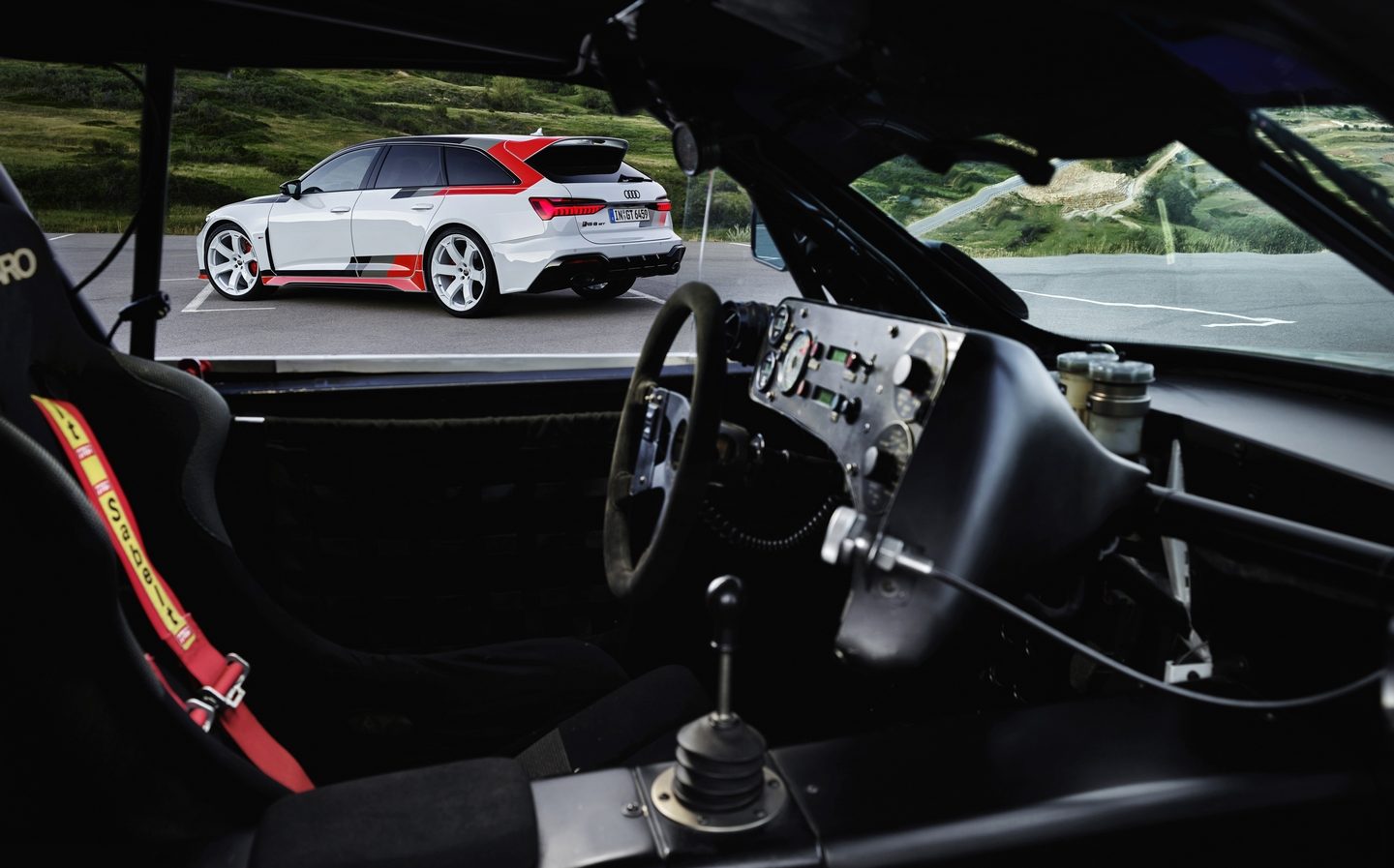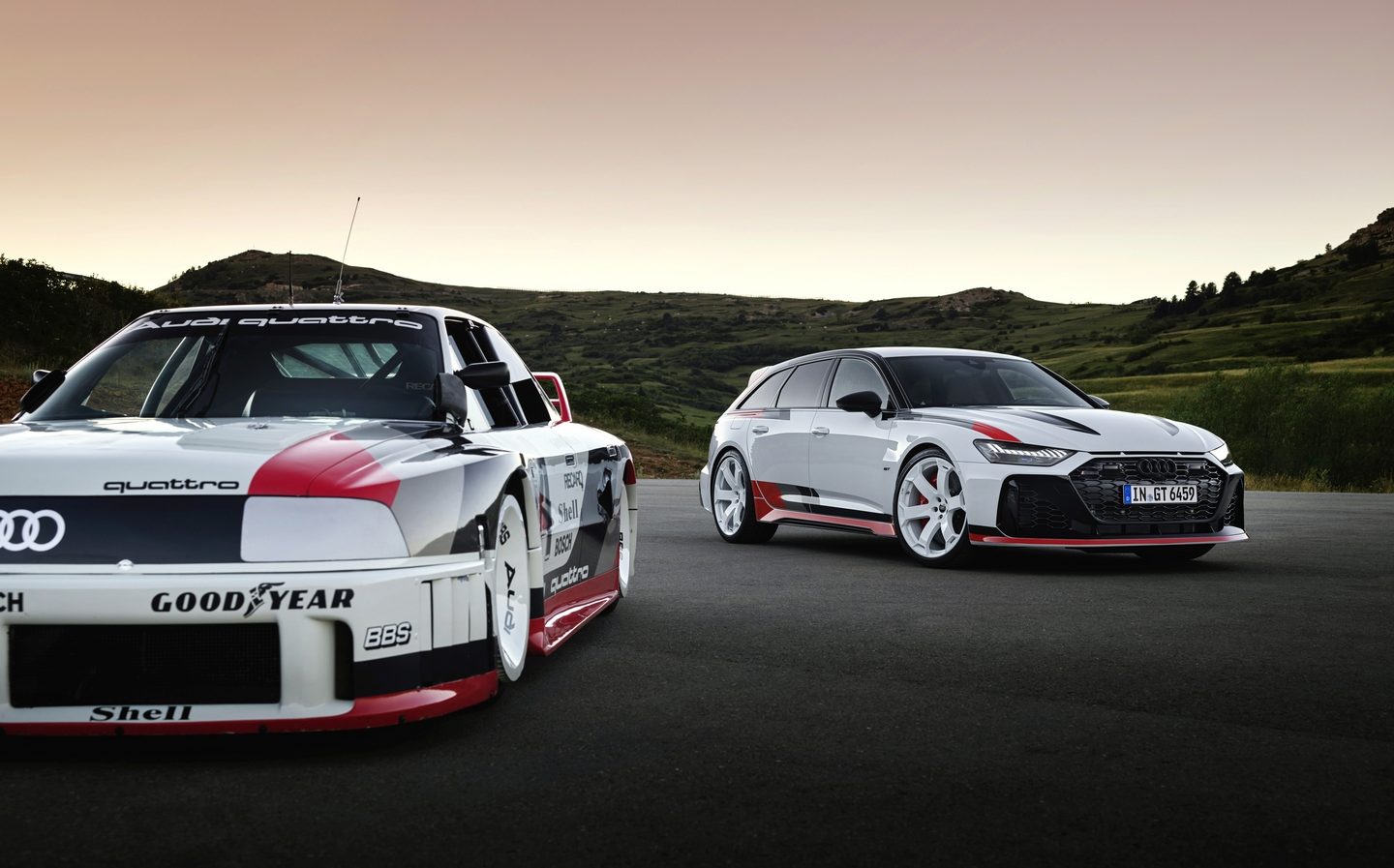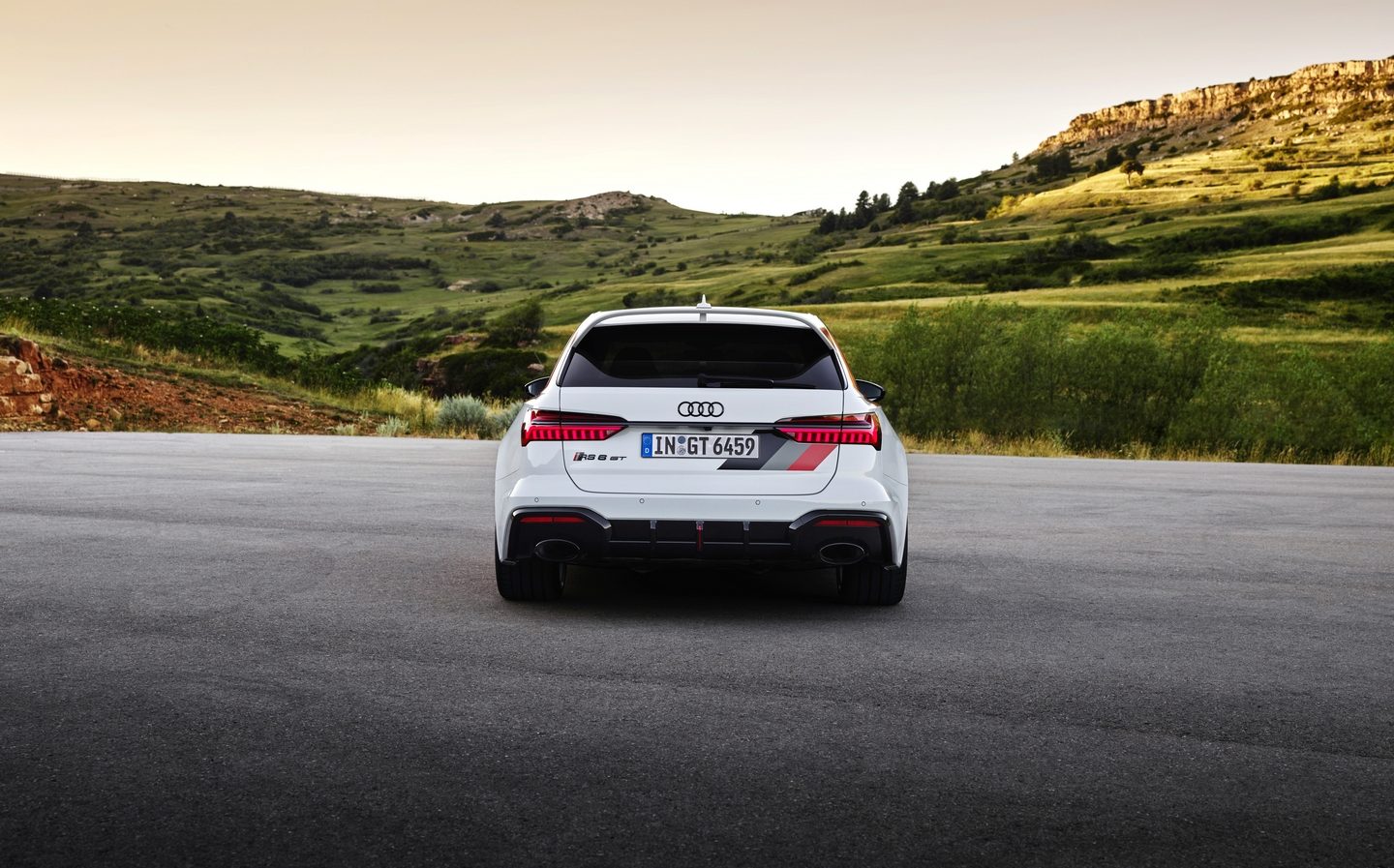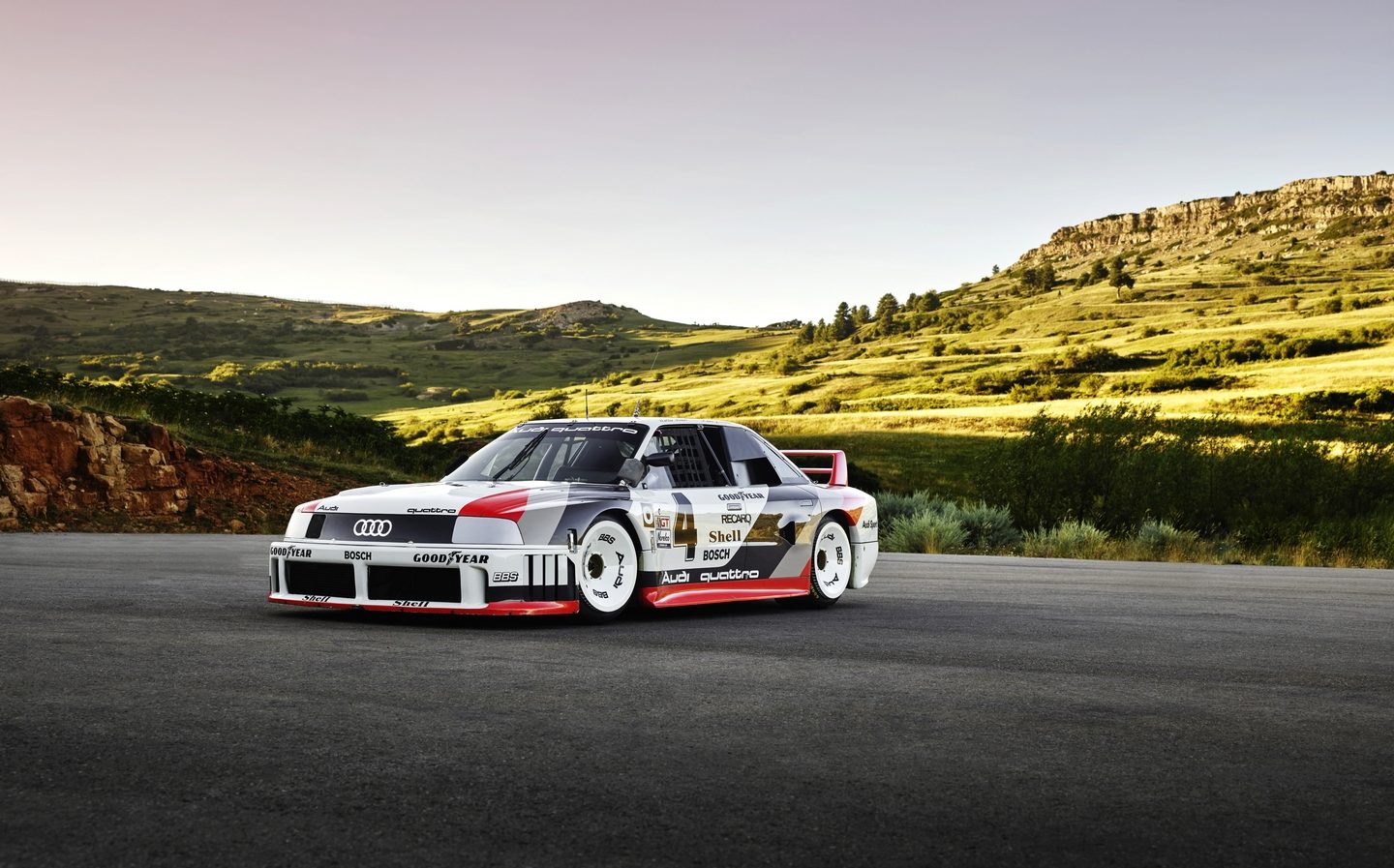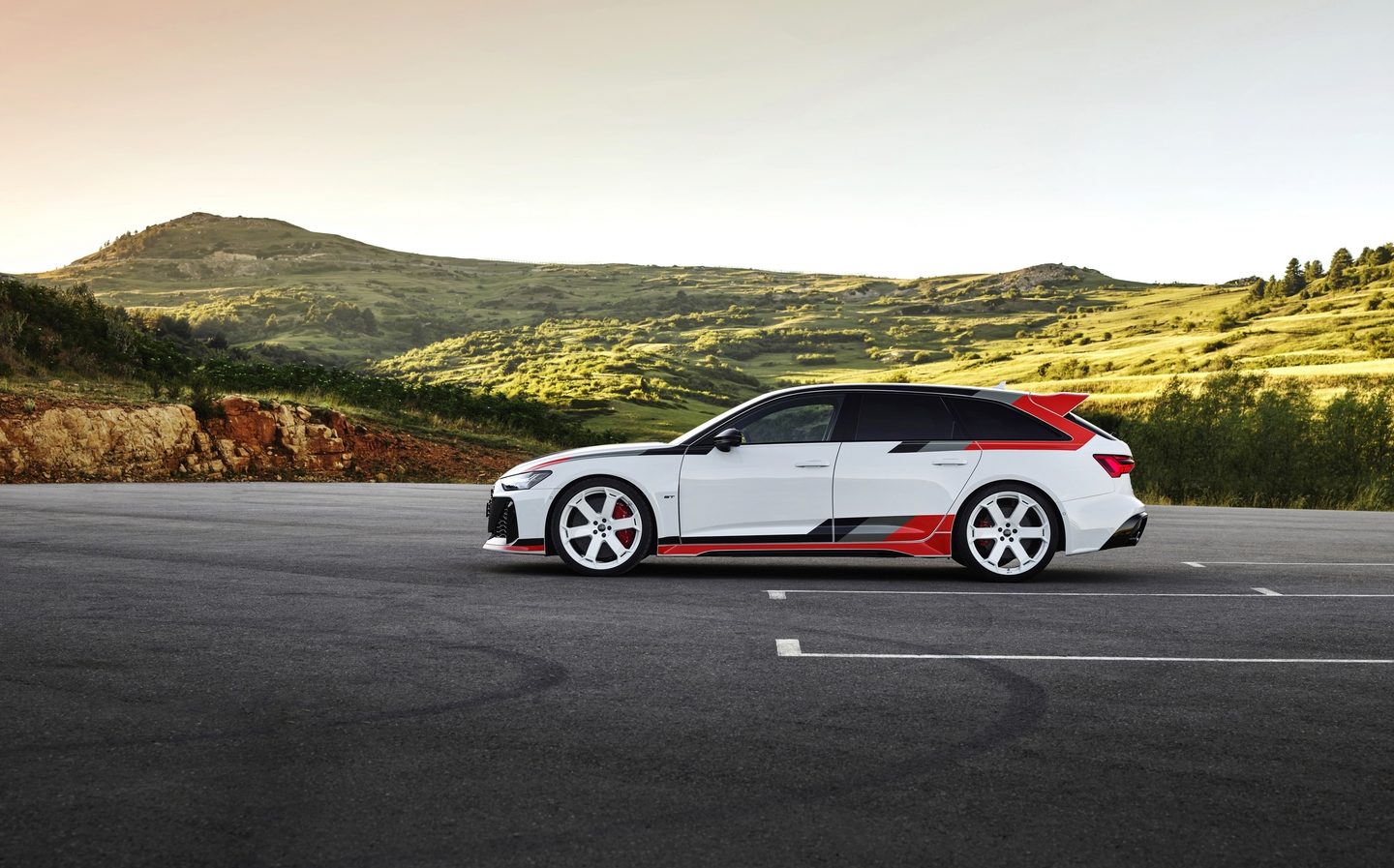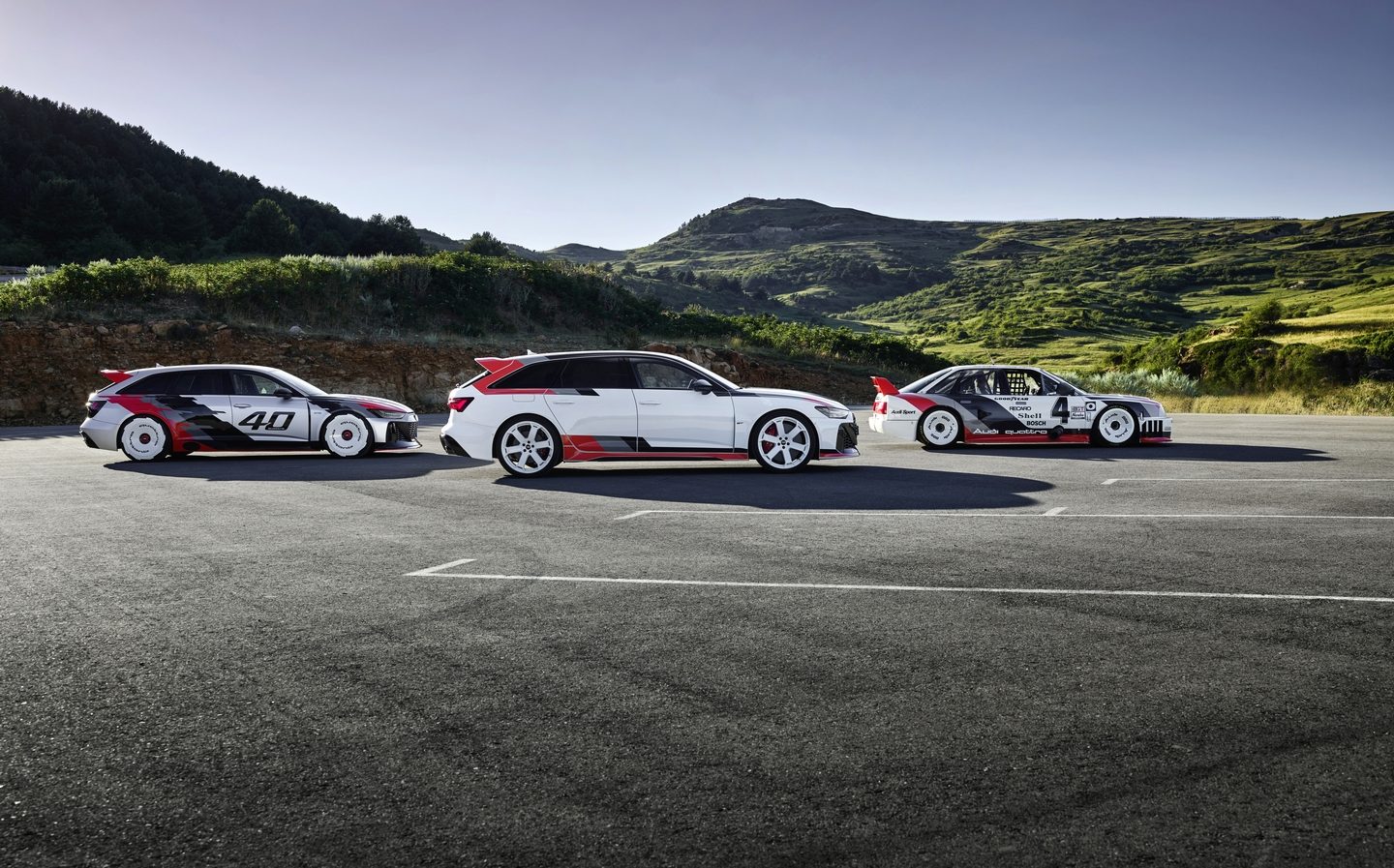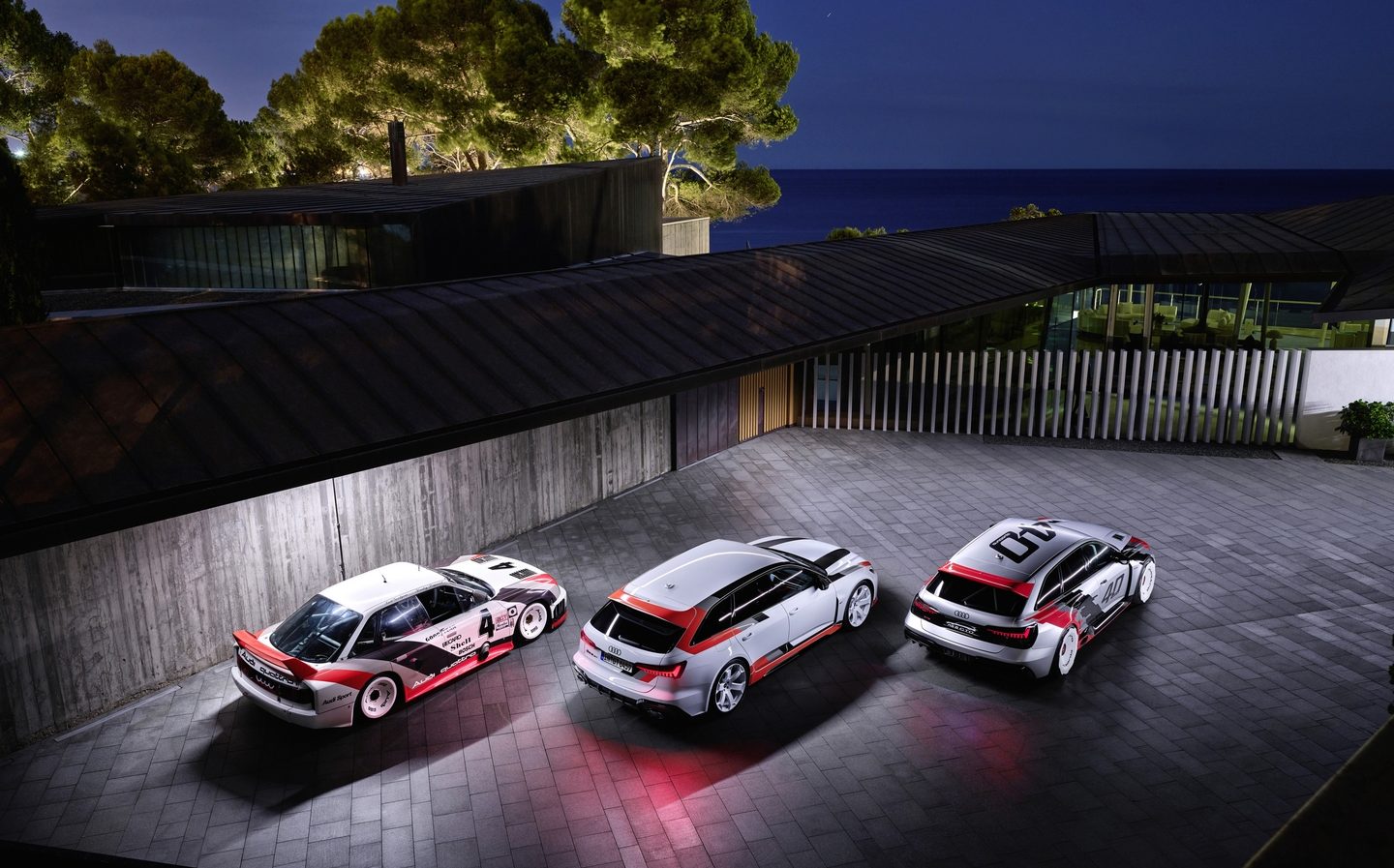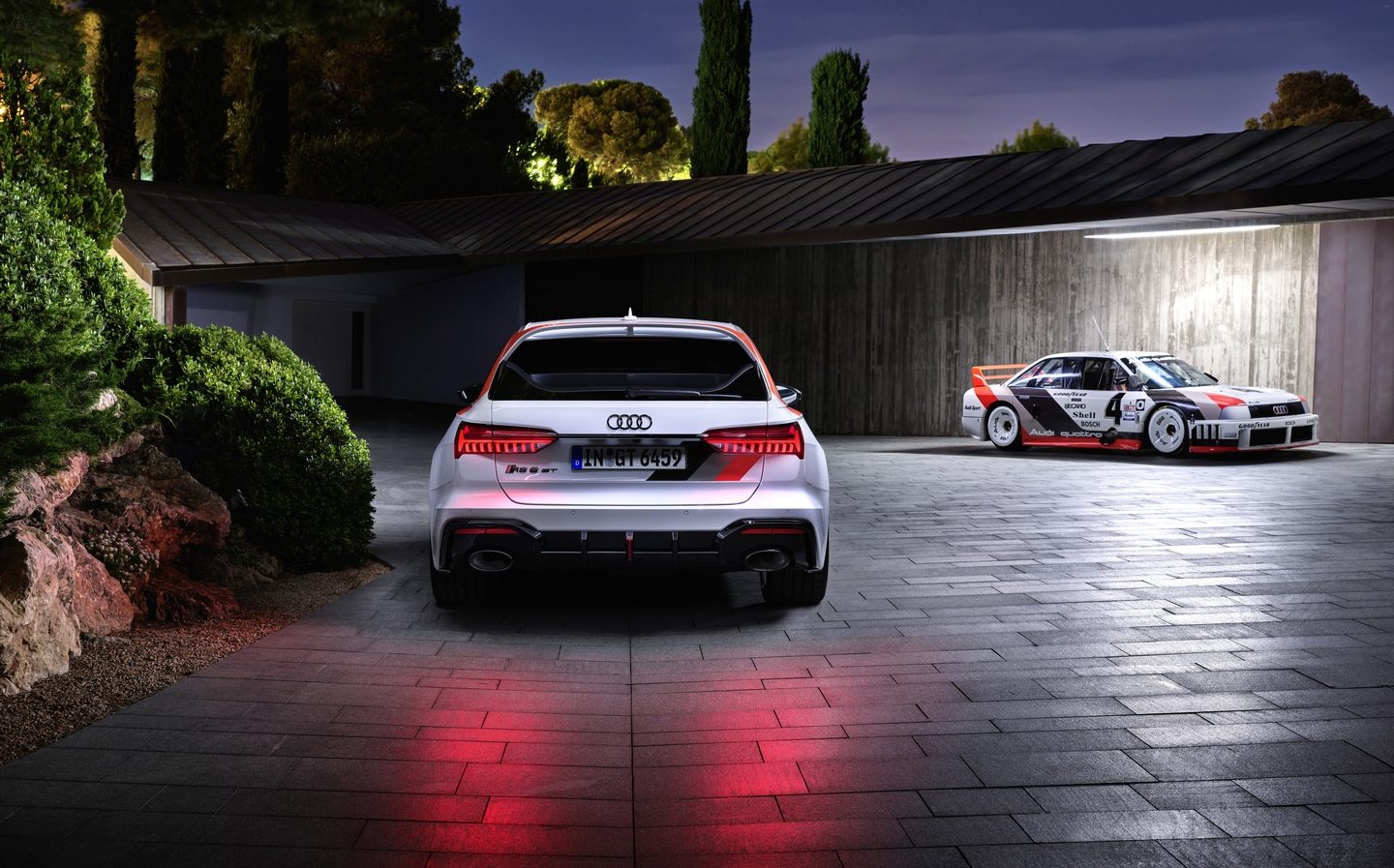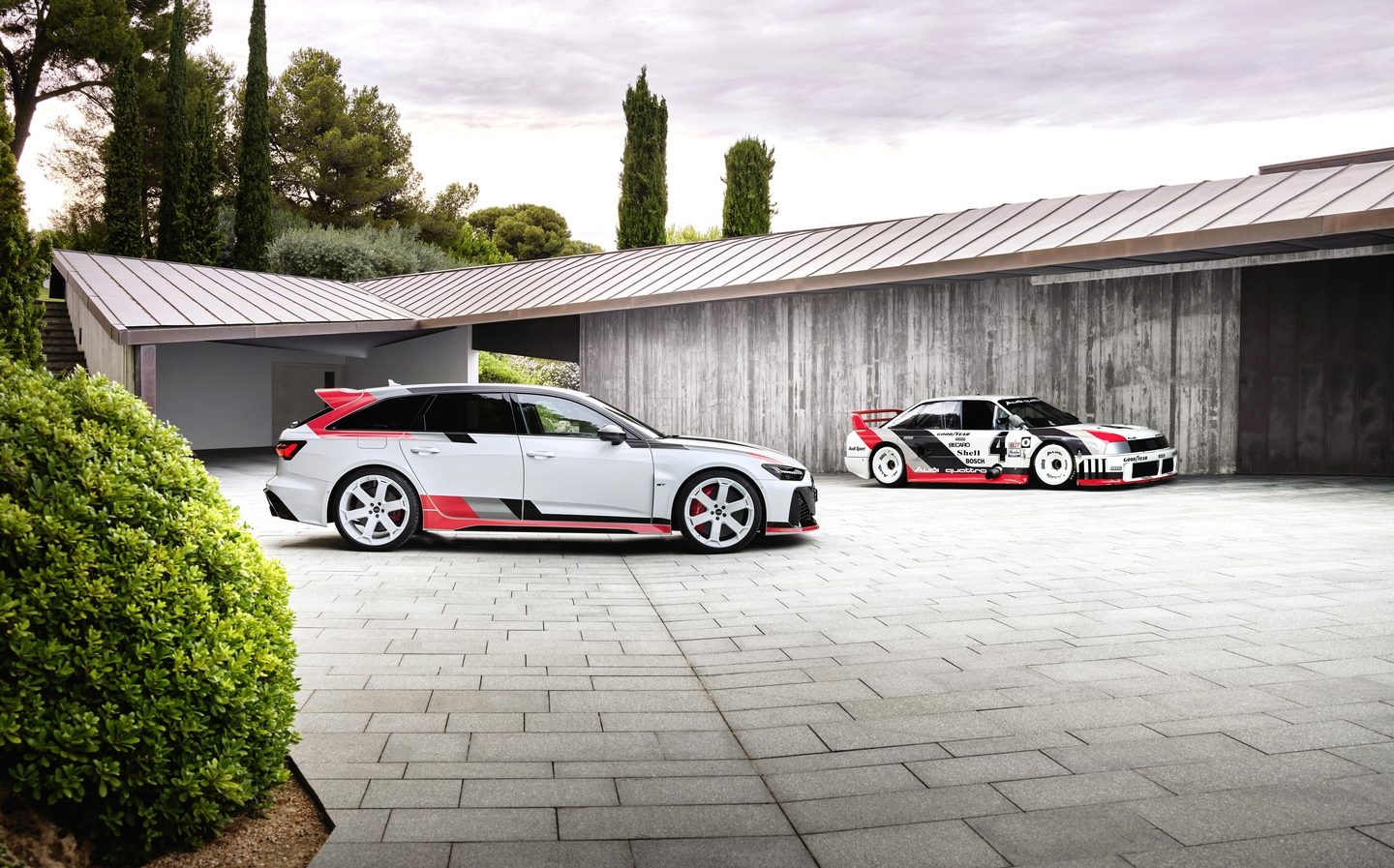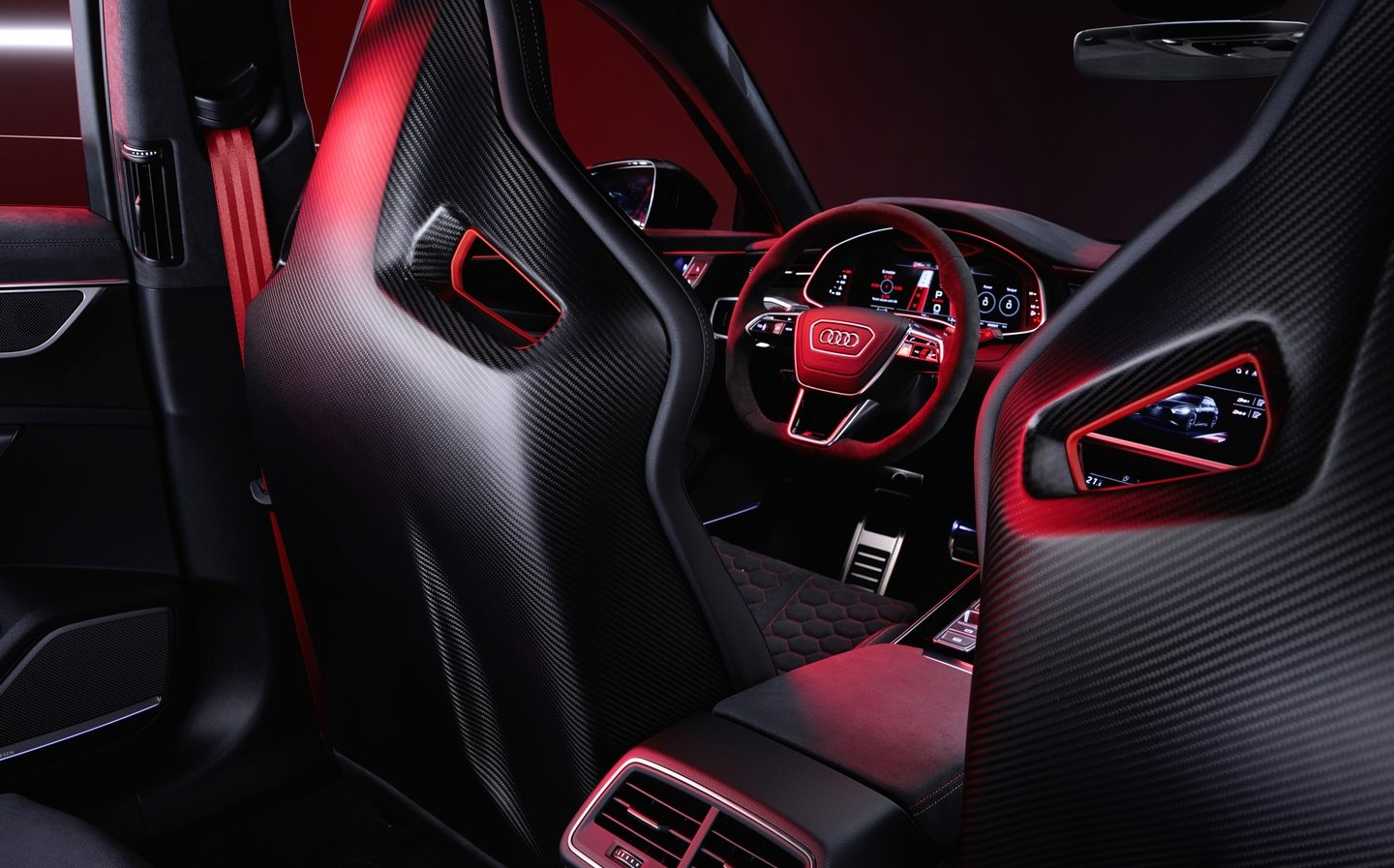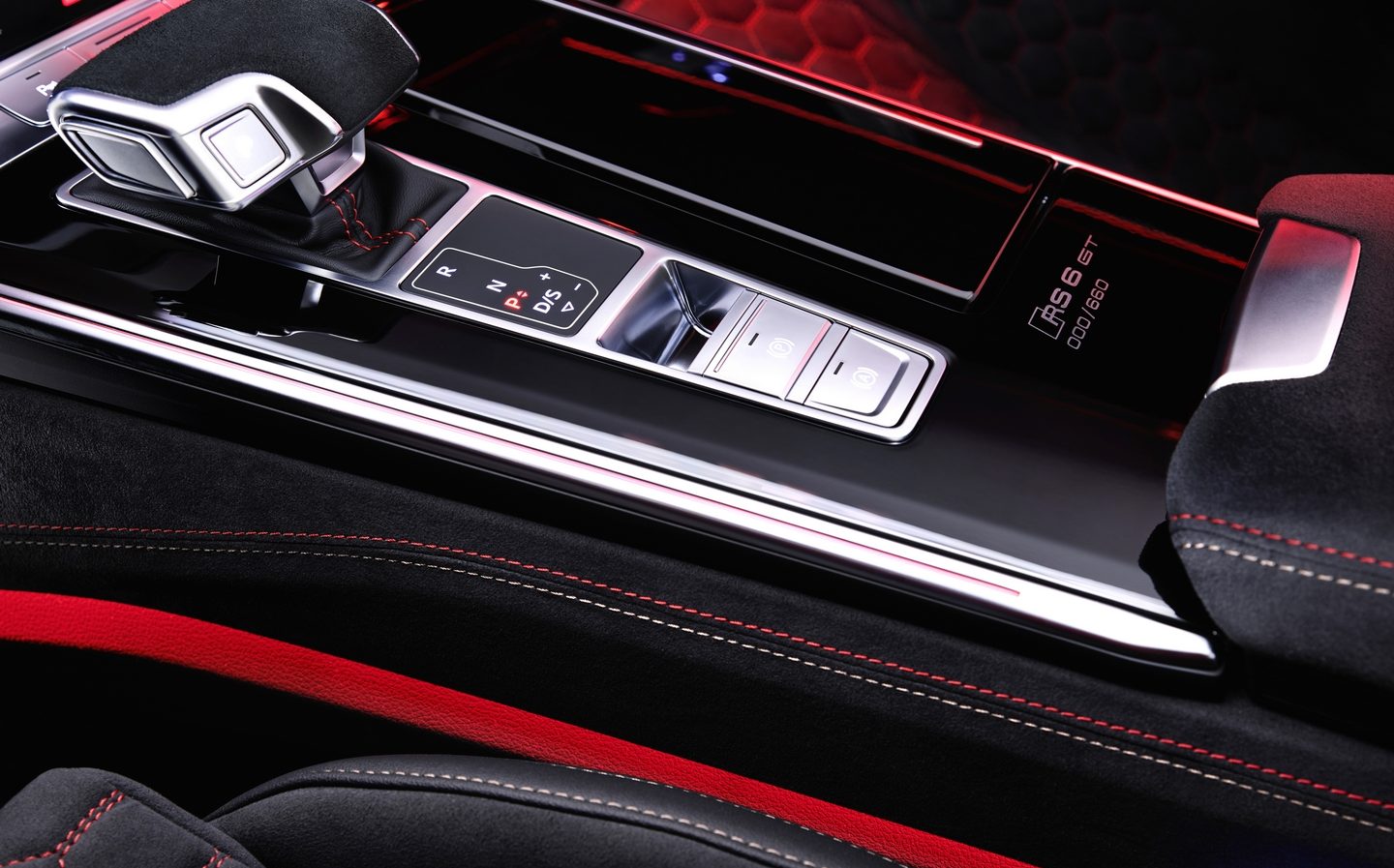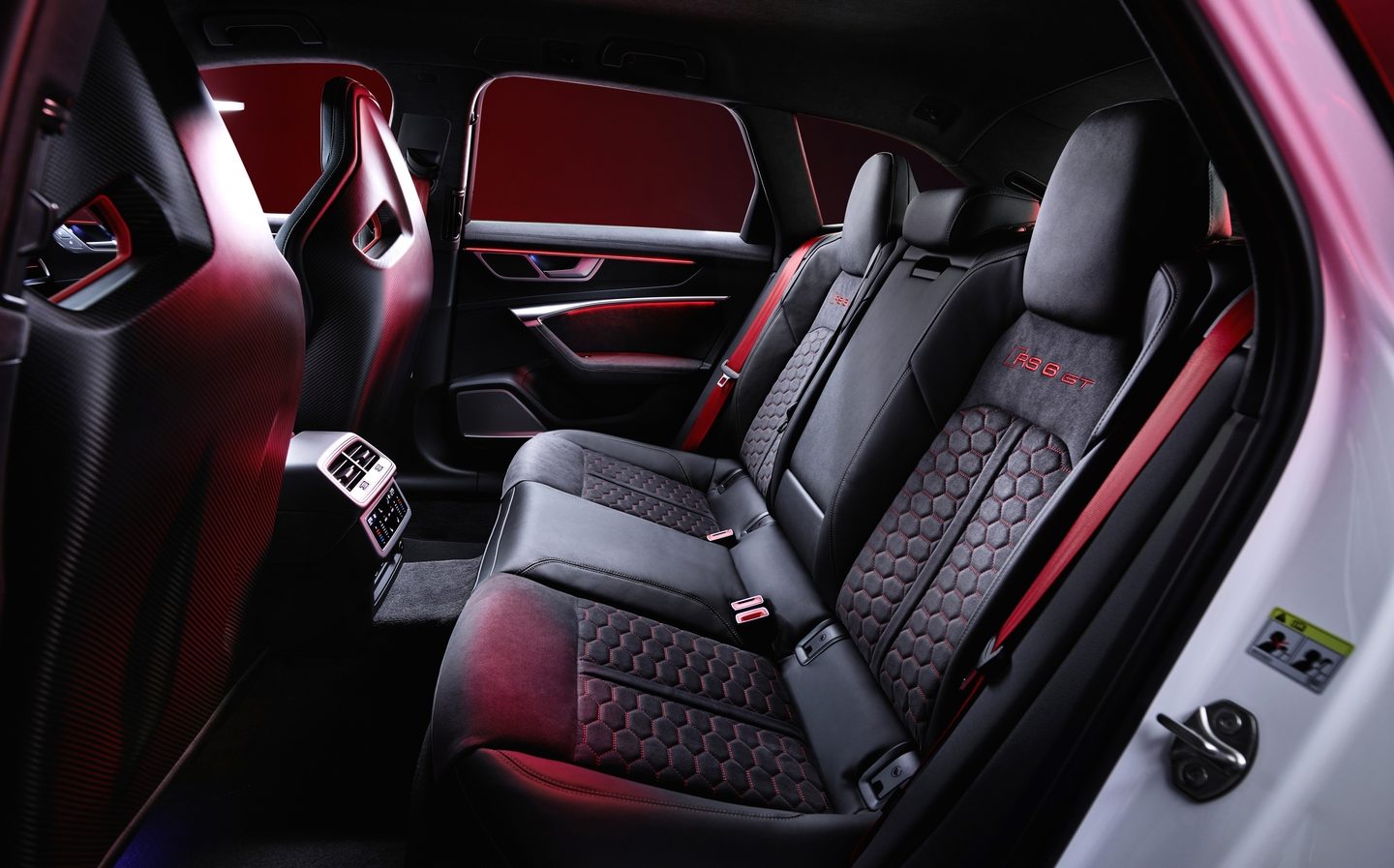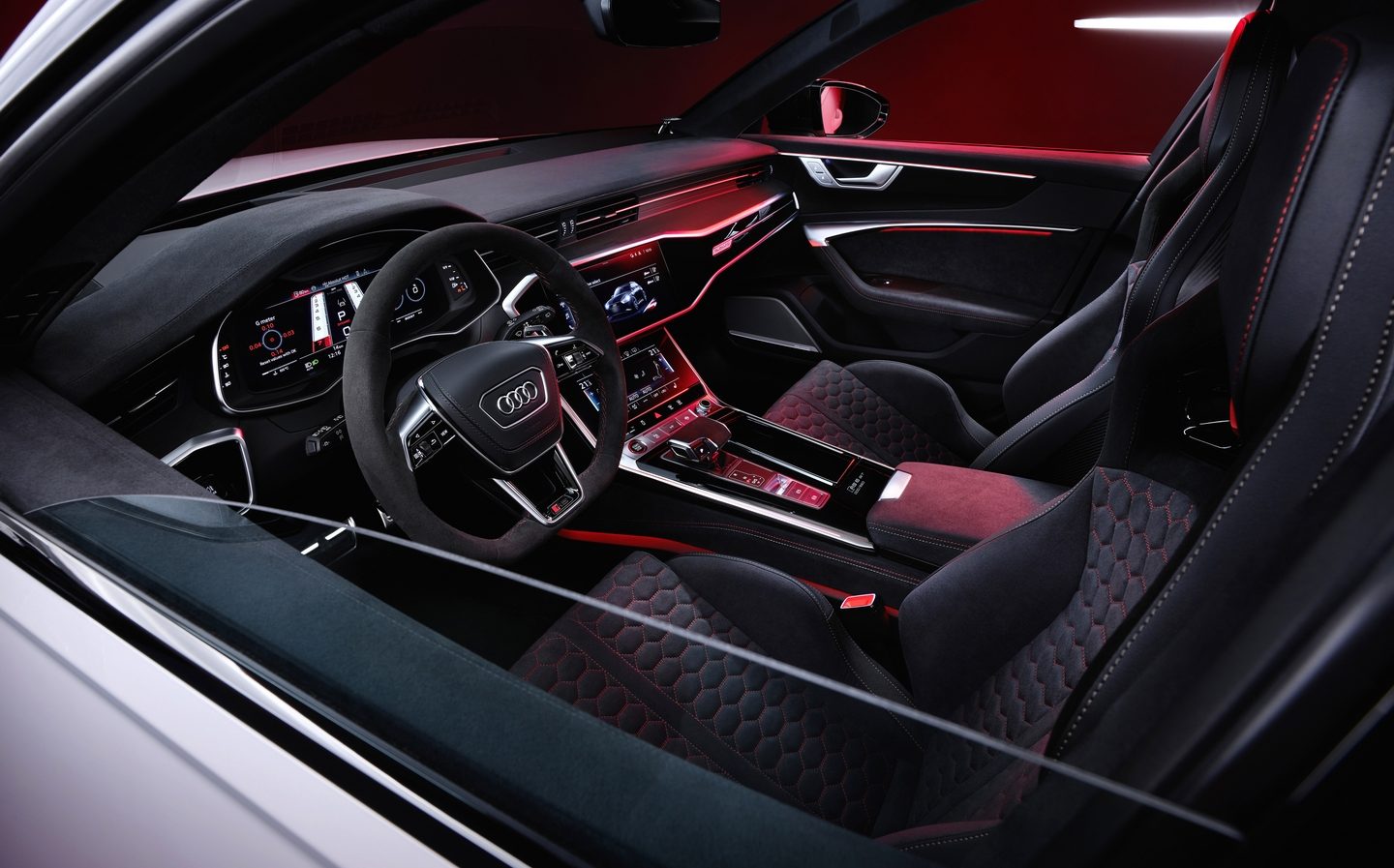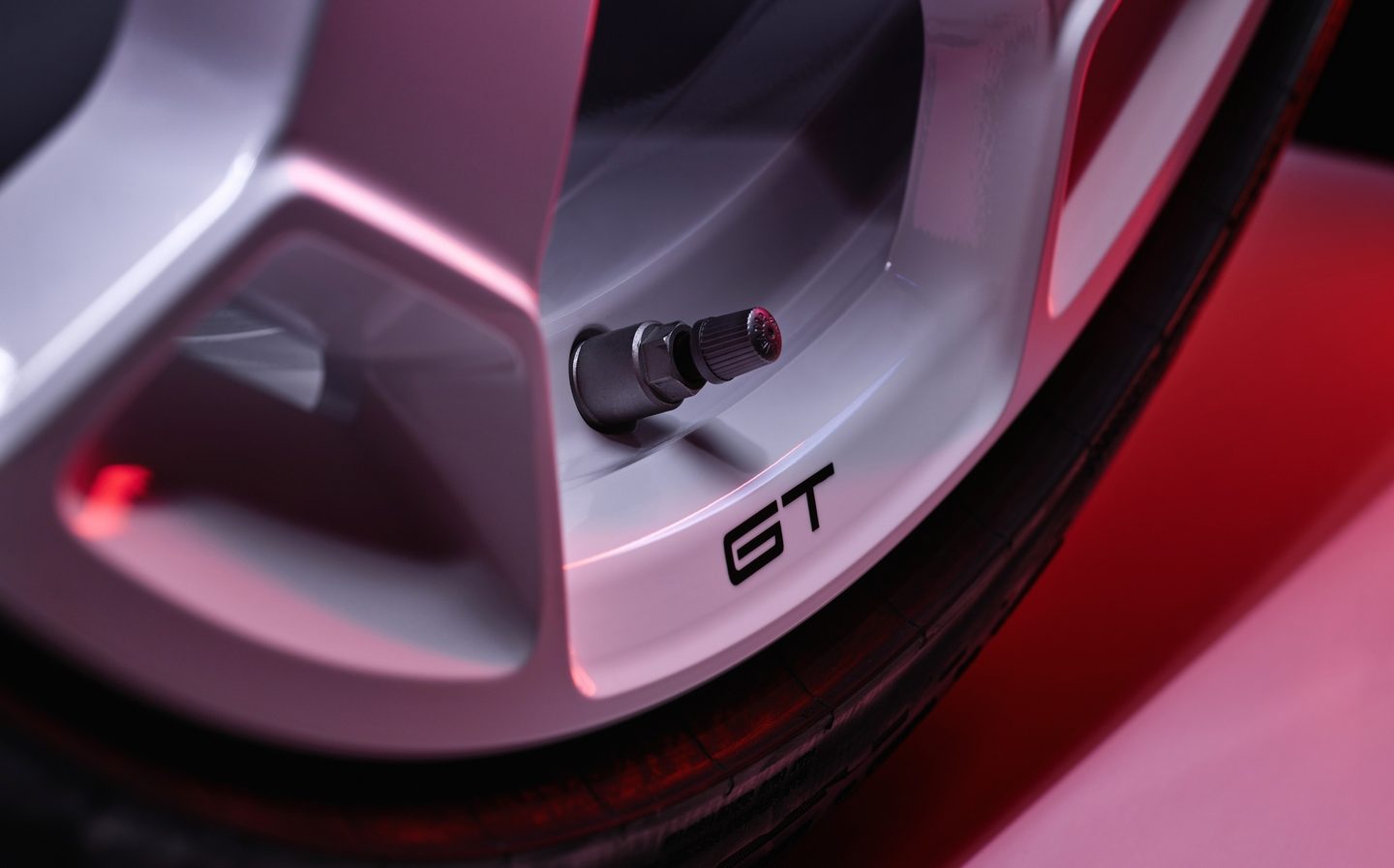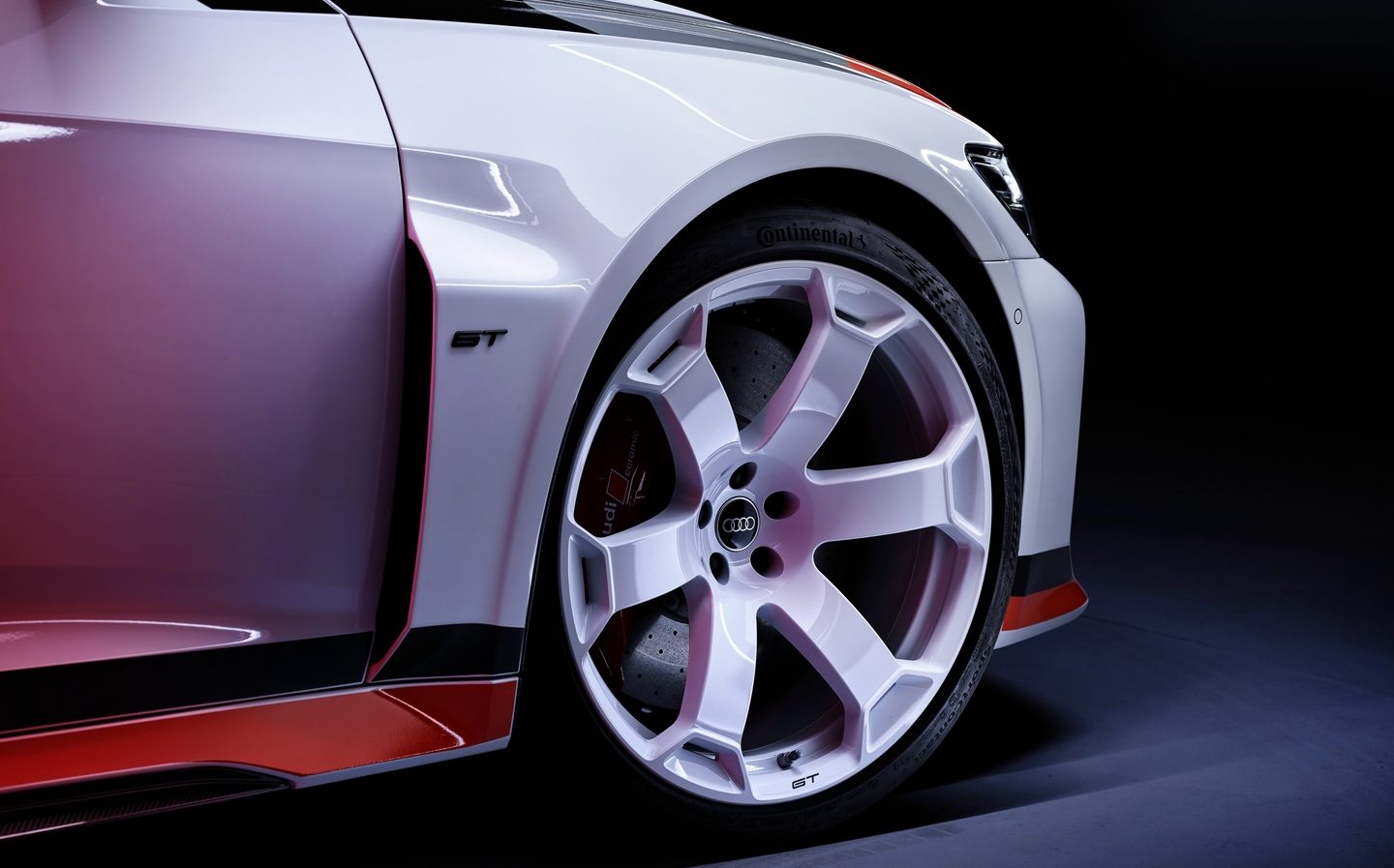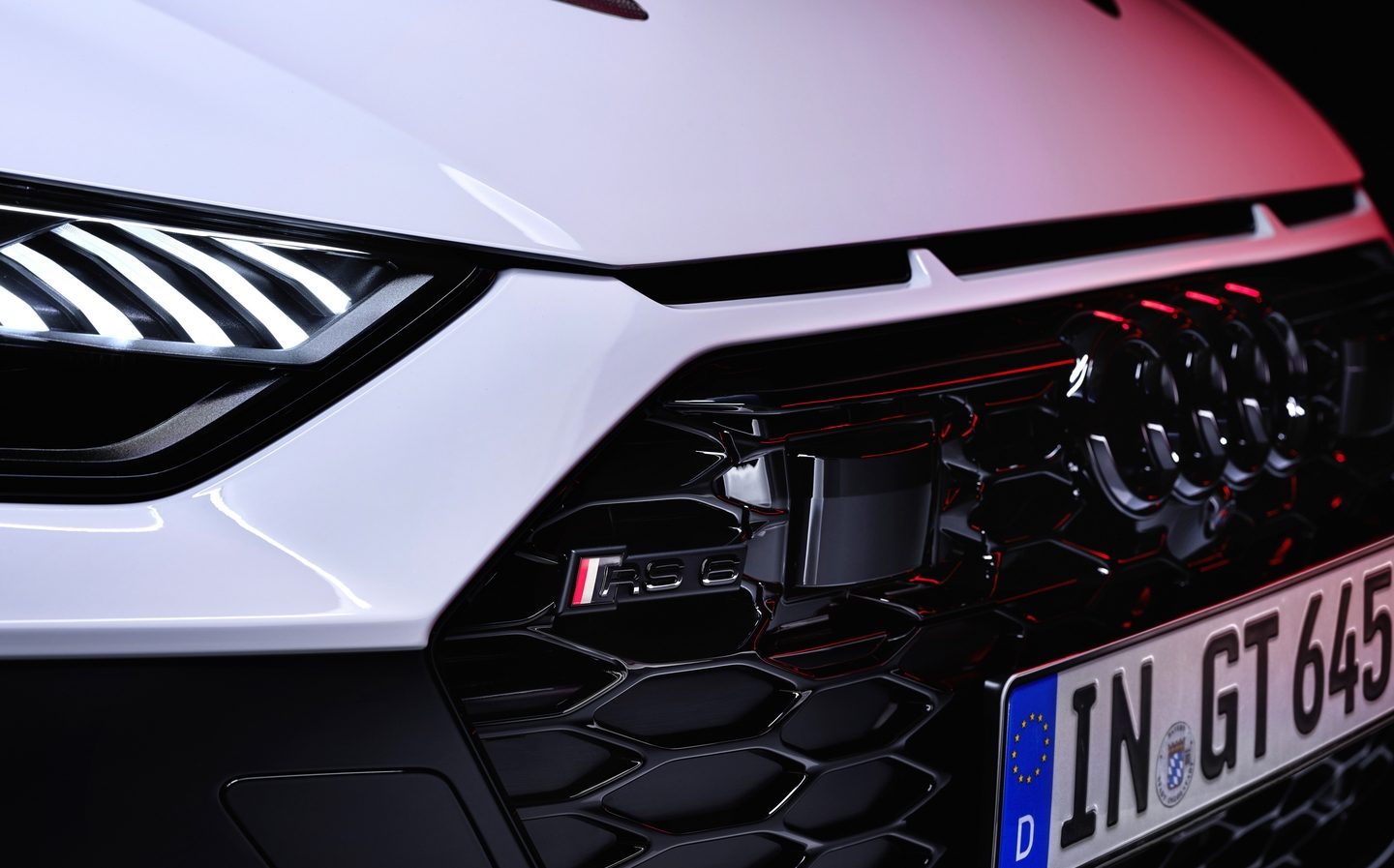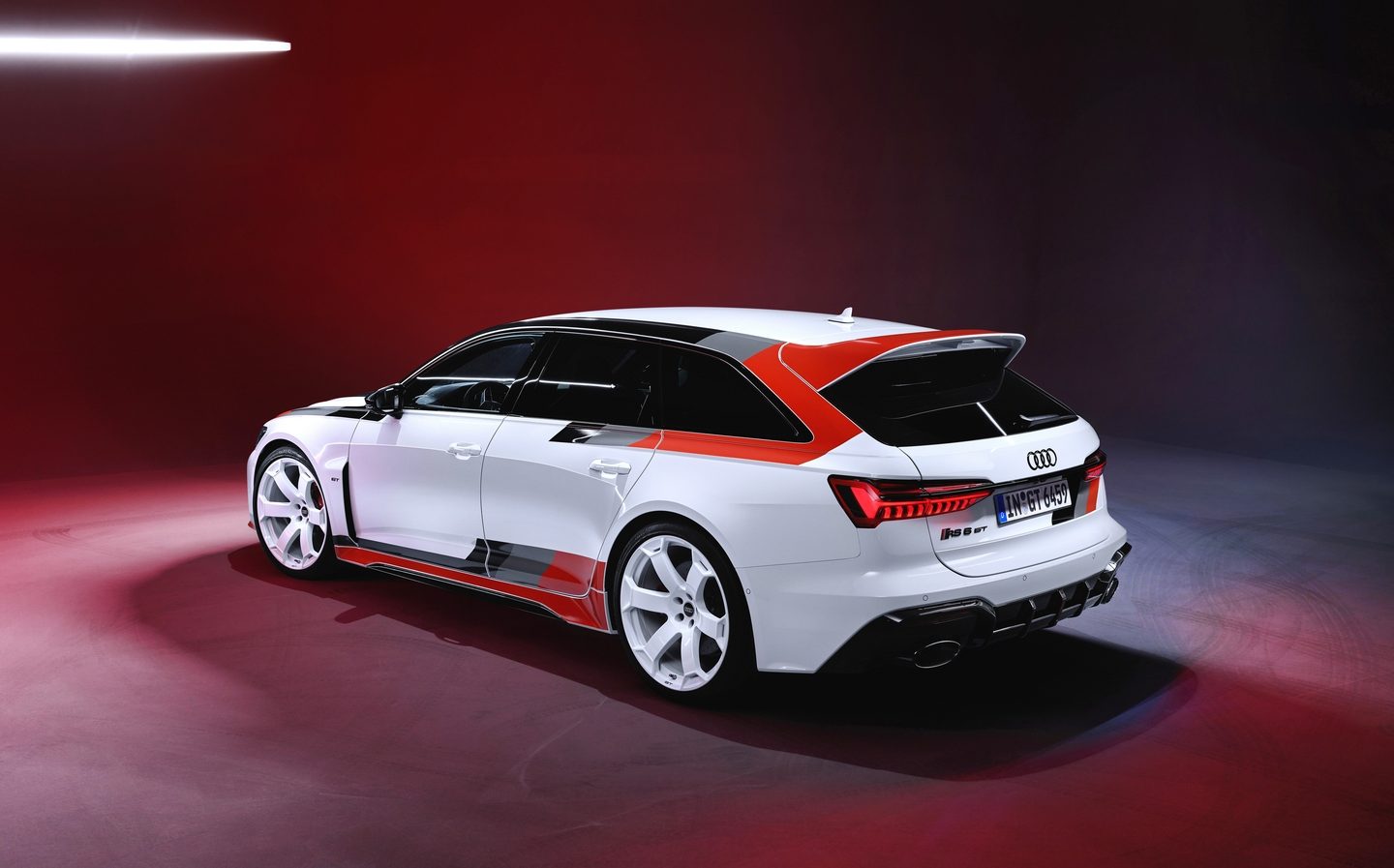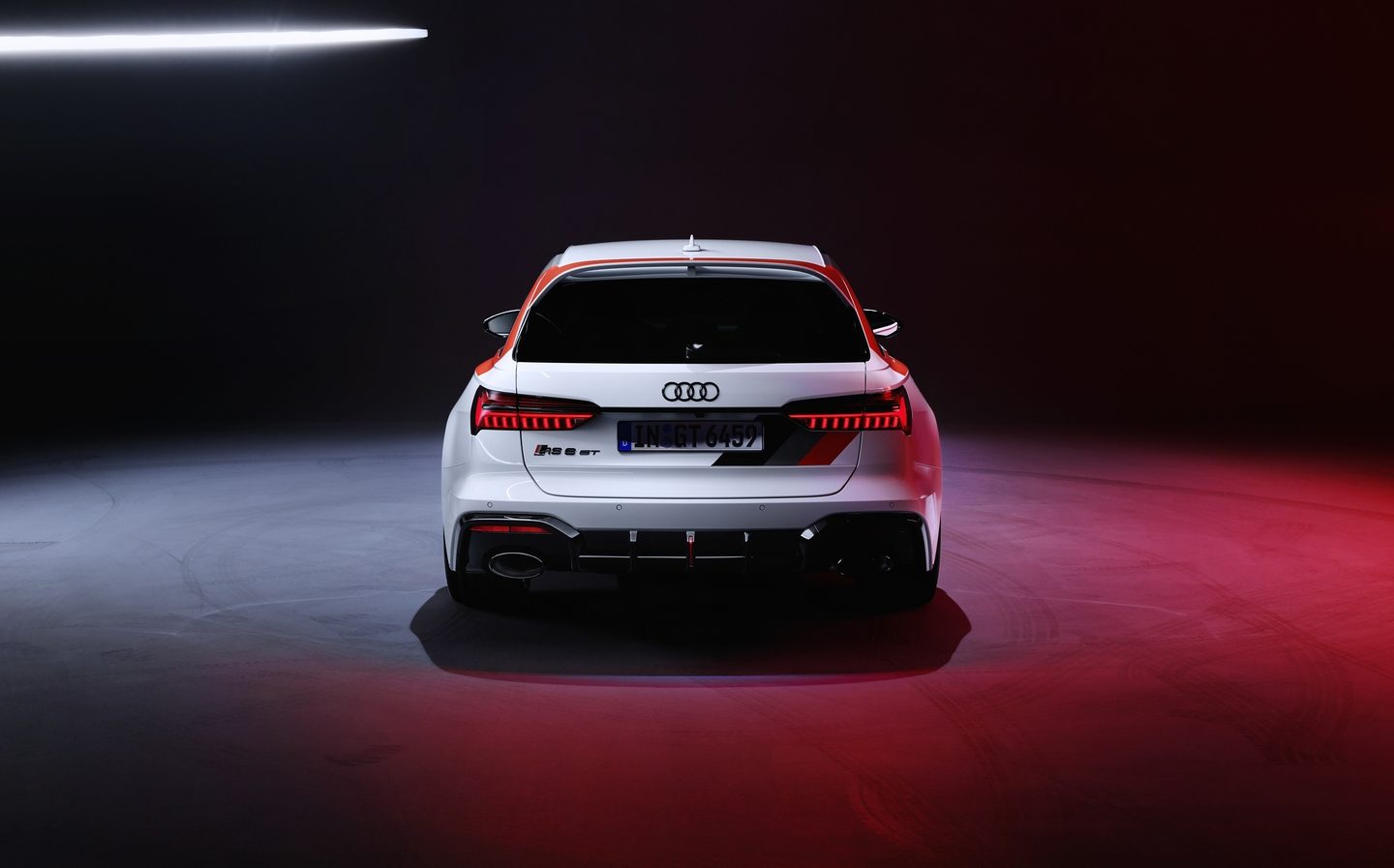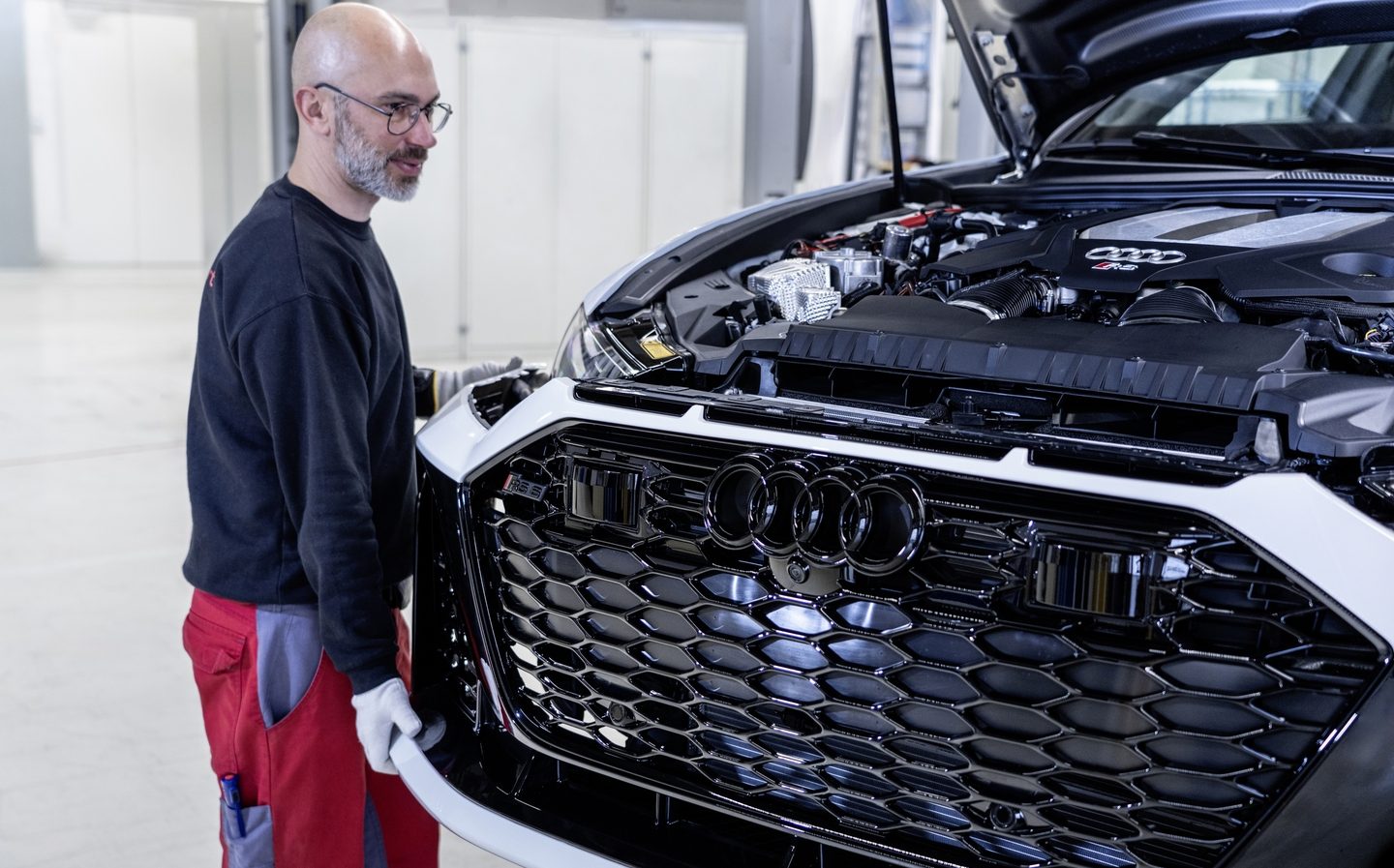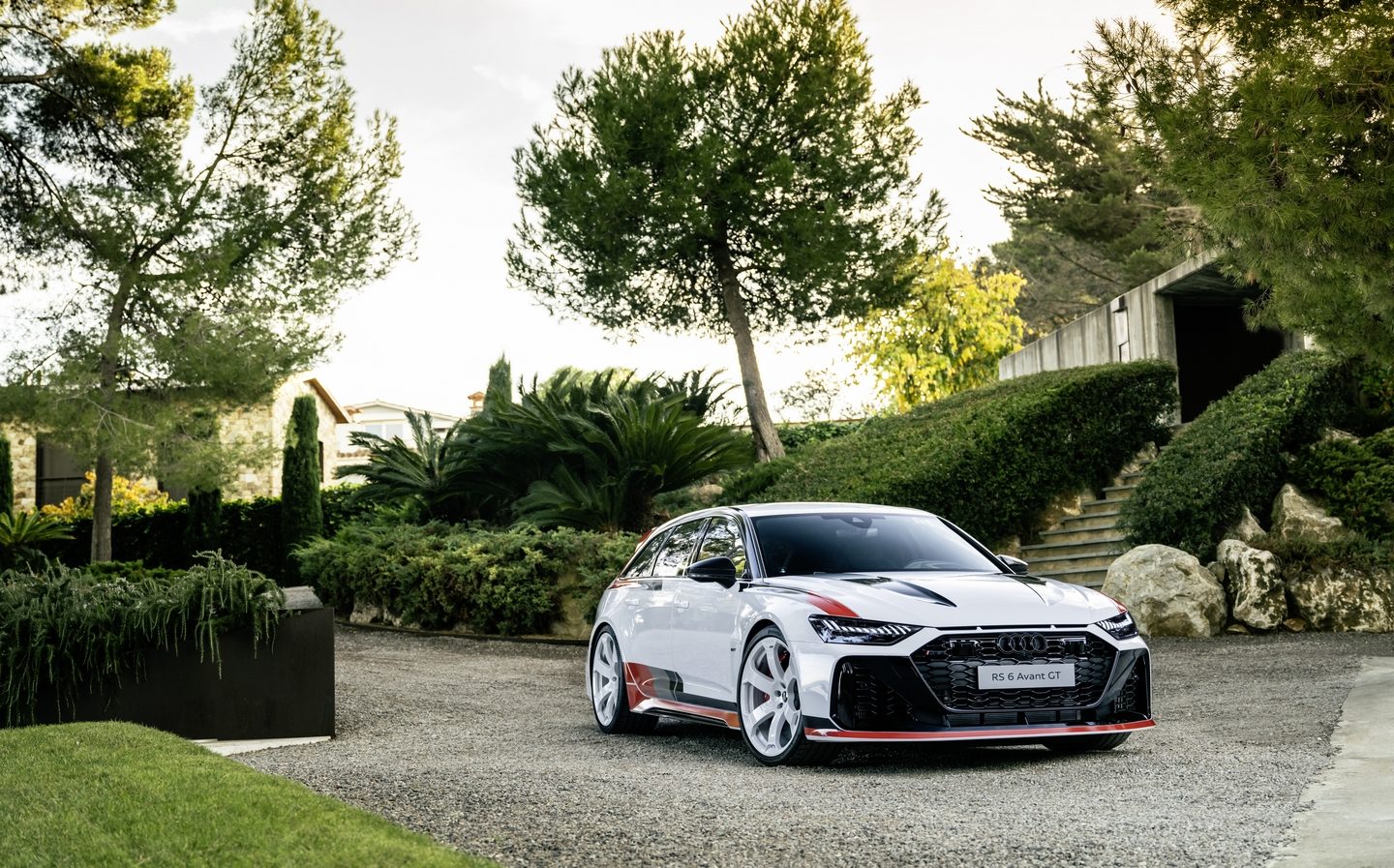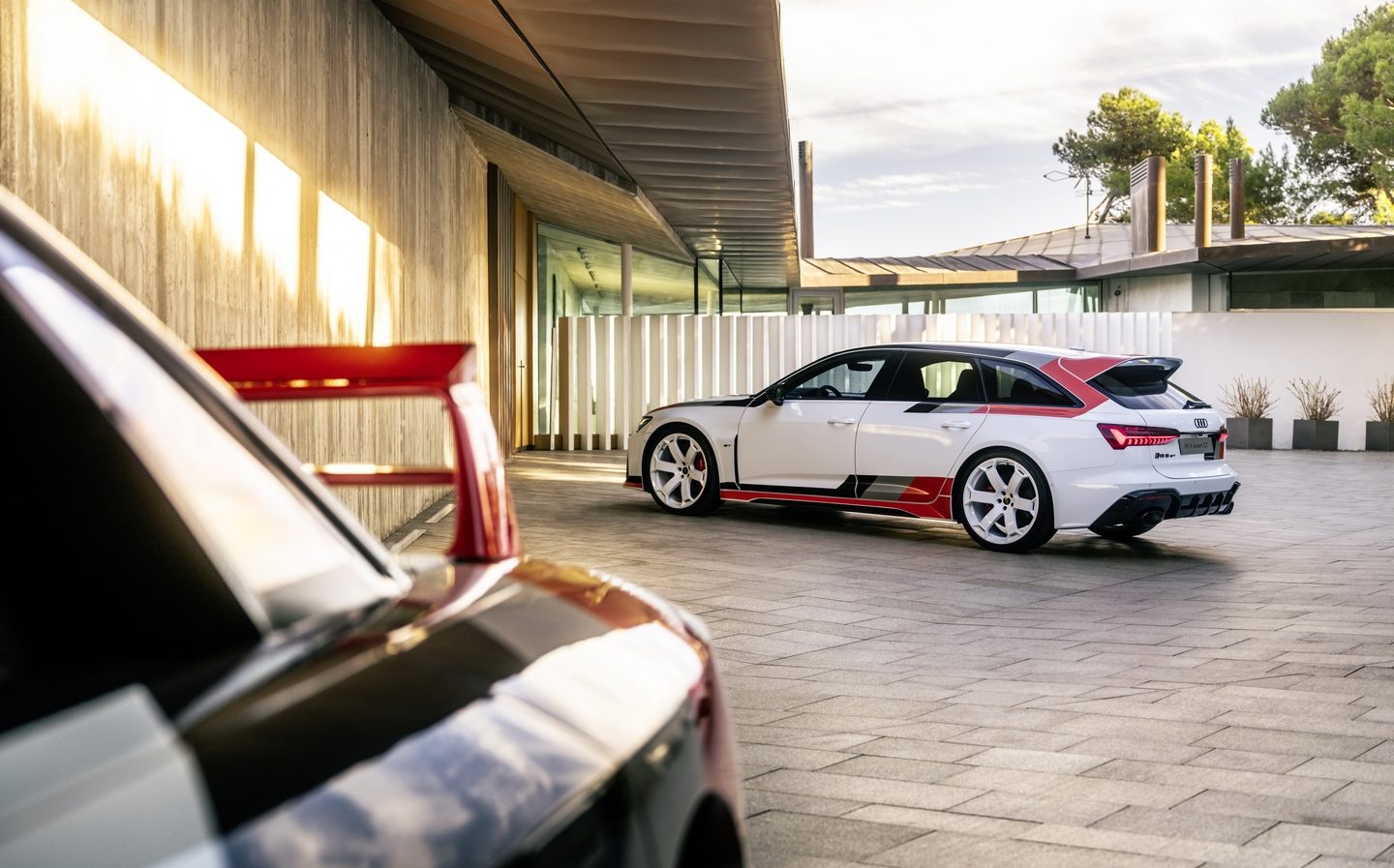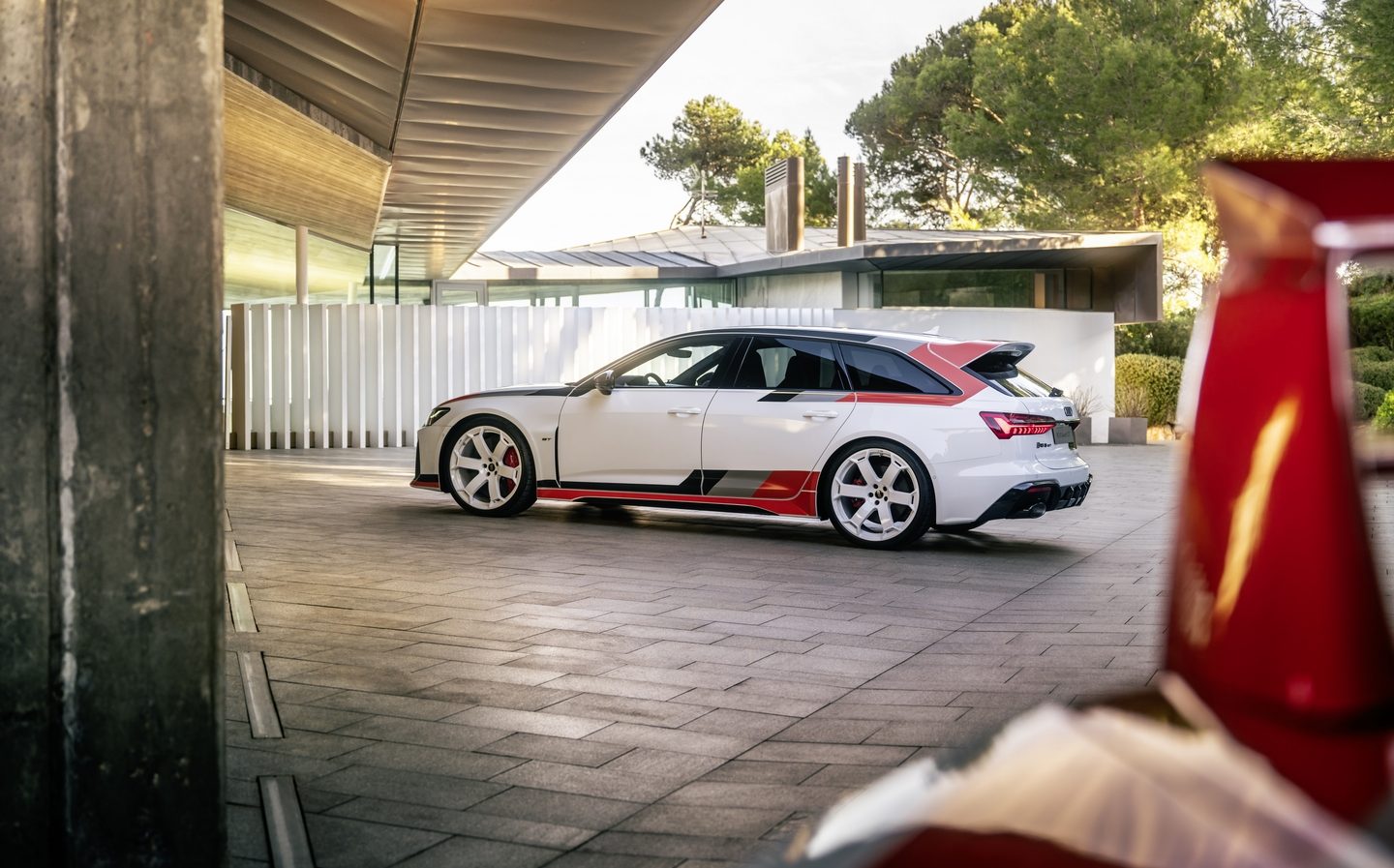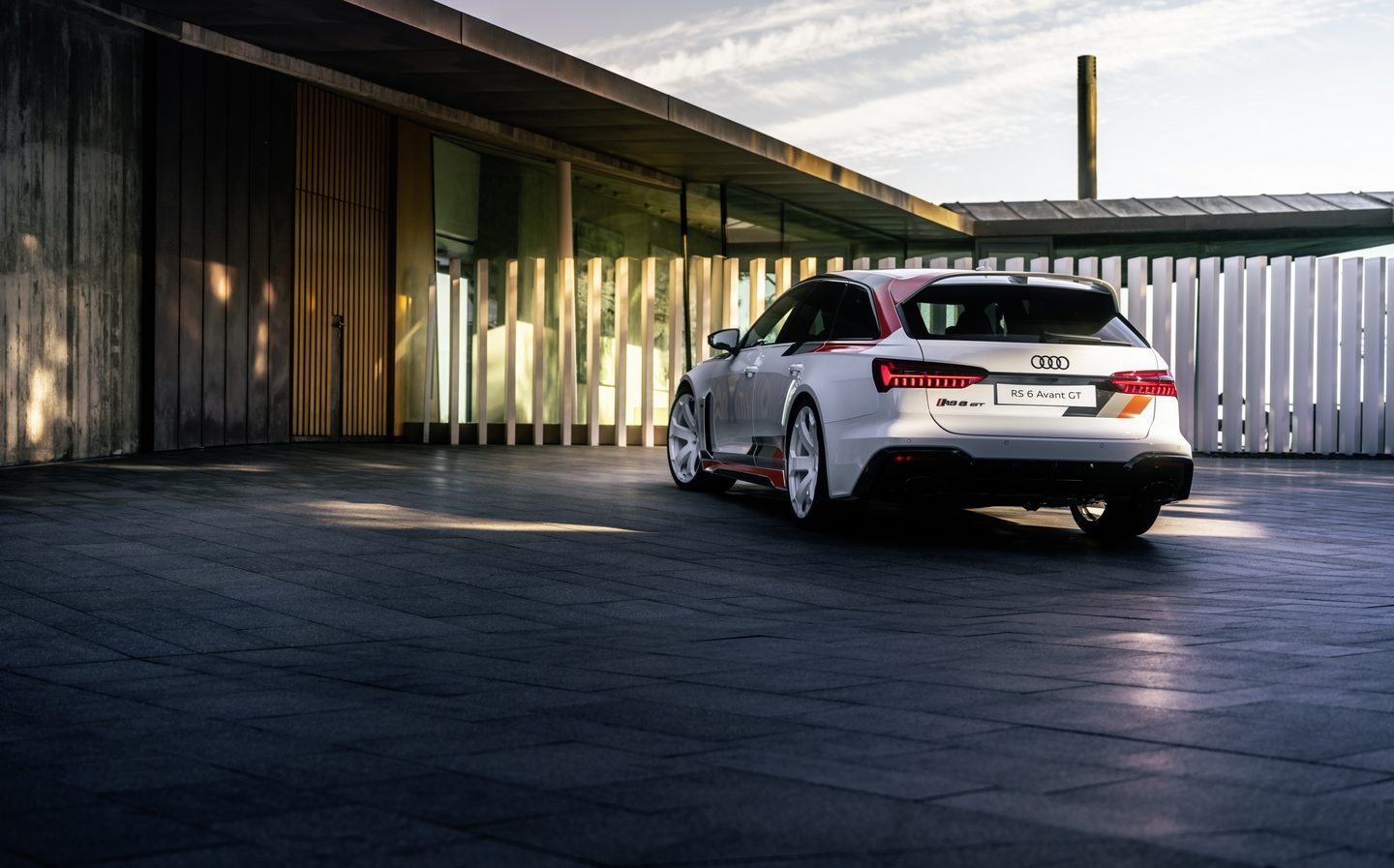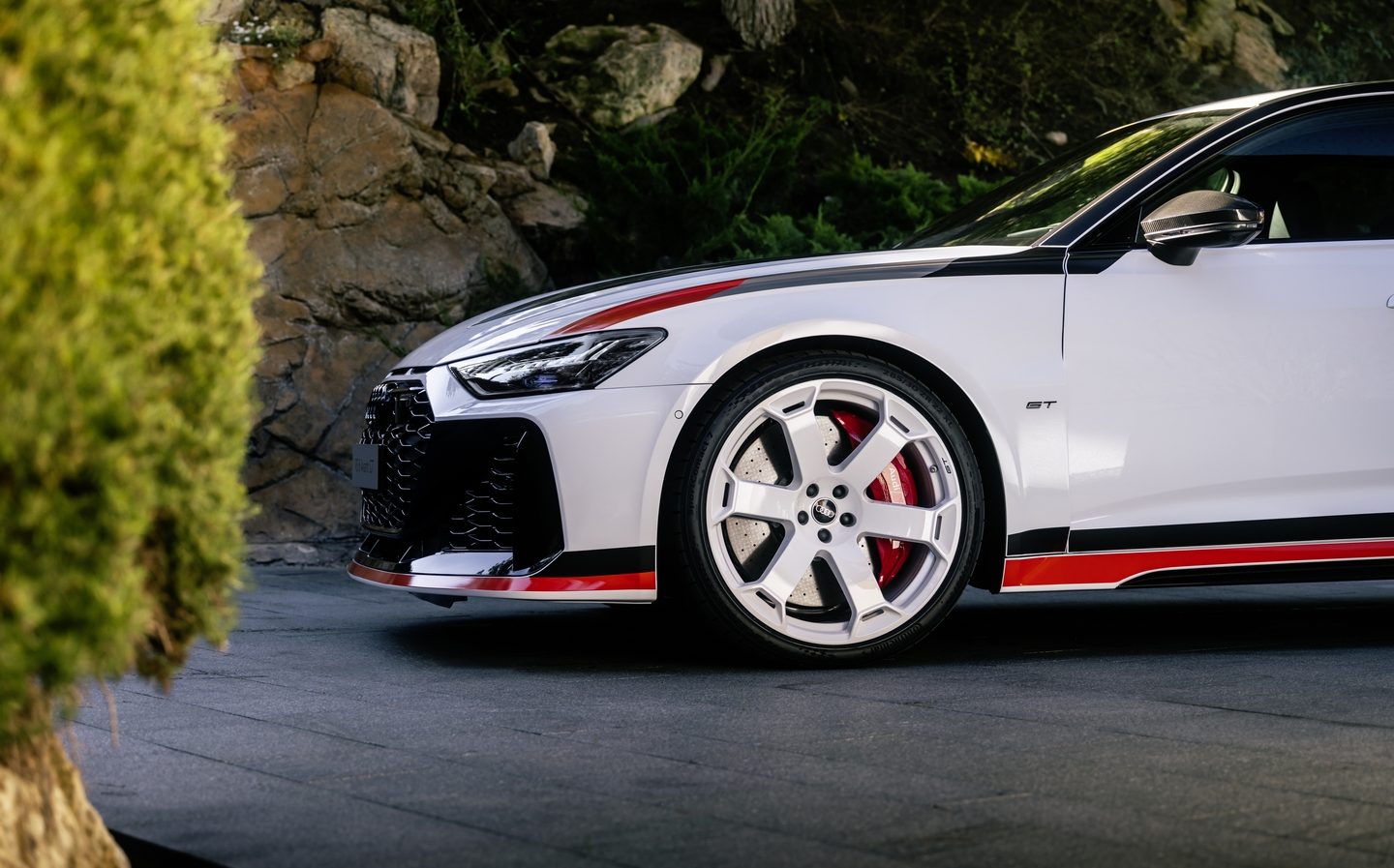Audi prepares lighter, faster RS 6 GT limited edition as a fond farewell to its mighty super-estate
You can have it wrapped like a race car from the 1980s
Audi is about to say goodbye to the current RS 6 Avant in the only way it knows how – with an ultra-limited, ultra-focused and ultra-expensive limited edition run-out variant called the RS 6 GT.
This follows on from similar valedictory halo models for the R8 supercar — also given the GT suffix — and the TT RS sports car, which was sold as an Iconic Edition. The main attributes are weight loss, performance gain and trick chassis upgrades.
The drawback? Each of the 60 examples of the RS 6 GT coming to the UK, which will have a worldwide production run of just 660 units, will cost £176,975. That’s a £61,495 premium over the price of the RS 6 performance.
Harks back to an Audi legend
Audi’s RS 6 GT takes its visual inspiration directly from the wide-arched 90 quattro IMSA GTO race car of 1989.
Yet, despite the new GT looking like it is broader and more sporting than the already stocky performance model, it’s no bigger at all. The extra visual muscle is achieved through tricks of the eye.

At the front, all the panels and details are new, including the ‘Singleframe’ grille and air intakes which are painted high-gloss black to emphasise the car’s stance.
The front wings now have added outlets behind the wheels, which both reduce air pressure in the wheel arches and improve brake cooling for the powerful RS ceramic discs.
At the back of the car, the huge diffuser has vertical details to make it seem wider, while the bottom of the tailgate has even been adapted to help the RS 6’s broad-shouldered visual menace.
Something’s missing on the roof
Beyond these details, the front bumper has a deeper and more aggressive splitter beneath it, while atop the roof is a double-deck, “pass-through” spoiler. This latter detail was taken from the 2020 Audi RS 6 GTO concept, which itself aped the look of the IMSA racer.
There’s also a subtle change up top for the GT that helps the entire car look sleeker and lower, which is the deletion of the roof rails — the first time any RS 6 Avant has done without such items.

Further, the RS 6 GT has beefier side skirts, carbon-capped door mirrors, bespoke badging with Audi Sport graphics and a set of six-spoke, 22in alloy wheels which are forged to make them lighter than the car’s standard rims.
This touch is part of a lightweighting scheme throughout the entire car, with the main talking point being that the bonnet and the front wings are all made of carbon fibre.
Lighter than standard
This marks the first time any production Audi has had such a feature and combined with the wheels and RS bucket seats in the cabin, the GT is 15kg lighter than an RS 6 performance, or 25kg trimmer than the 600hp RS 6 that launched in 2019. That said, at 2,075kg overall, the GT is hardly a featherweight in the wider automotive world.
Aside from the carbon-backed buckets up front, the interior of the RS 6 GT is not as significantly altered as the exterior when compared to other models, but red-and-copper contrast stitching, extensive use of Dinamica microfibre, crimson seatbelts and then plenty of “RS 6 GT” emblems abound to elevate the ambience.
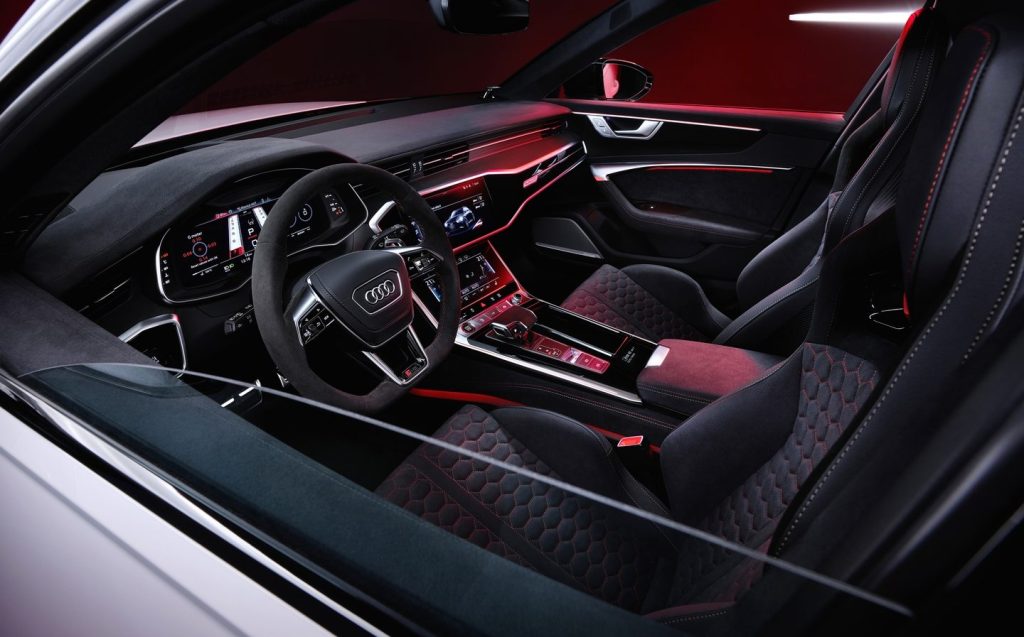
There’s also a graphic on the centre console which denotes the exact serial number of each car in the build run of 660 vehicles.
Such is the speciality nature of the bodywork, cabin and suspension that the GT is the only RS 6 which isn’t built entirely at Audi’s Neckarsulm plant in Germany. Instead, each one goes off to the carbon-neutral Böllinger Höfe facility, where both the R8 supercar and e-tron GT electric are made, to be hand-finished by specialist mechanics in a process which takes a day per car.
Give it the Heritage look
Returning to the exterior for a moment, you cannot fail to have noticed the decals on the car in the pictures. That is known as the “Heritage” wrap and it’s an homage to that IMSA 90 competition vehicle.
These graphics are only available with three of the five body colours offered for the RS 6 GT, but luckily those three finishes are the only ones offered on the UK allocation of 60 cars from the total run.
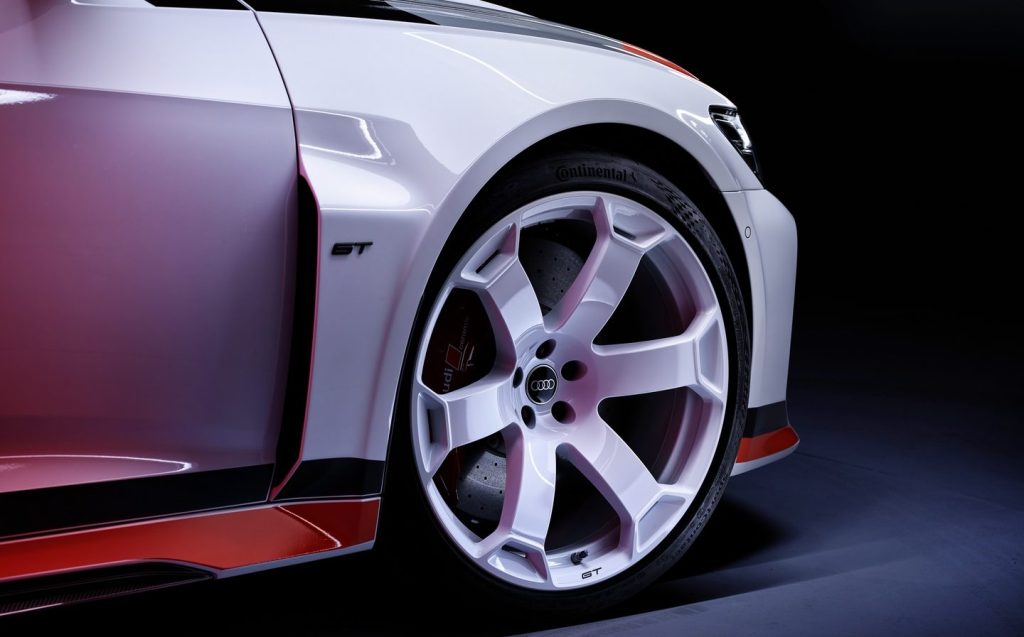
Buyers can therefore choose from Arkona White, Nardo Grey or Mythos Black metallic, either with or without the graphics. If you opt for them, the Arkona cars get this full Heritage red, black and grey detailing with white 22in wheels.
The Nardo and Mythos finishes, conversely, get more subdued decal wraps in black and grey, while their alloys revert to either high-gloss or matte black.
No extra power, but it’s quicker
The RS 6 GT gains the same enhanced 621bhp iteration of the 4-litre biturbo petrol V8 engine as the performance model, which represents a gain of 30bhp over the regular “C8” RS 6 we first saw five years ago.
Despite no increases in engine output, the lower kerb weight of the GT allows it to run the 0-62mph sprint a tenth quicker than the performance car at 3.3 seconds overall, which compares well to the 3.6-second run the 591bhp RS 6 can manage.
It’ll also do 0-124mph in 11.5 seconds, two tenths faster than an RS 6 performance and fully 1.5 seconds ahead of the regular RS 6.
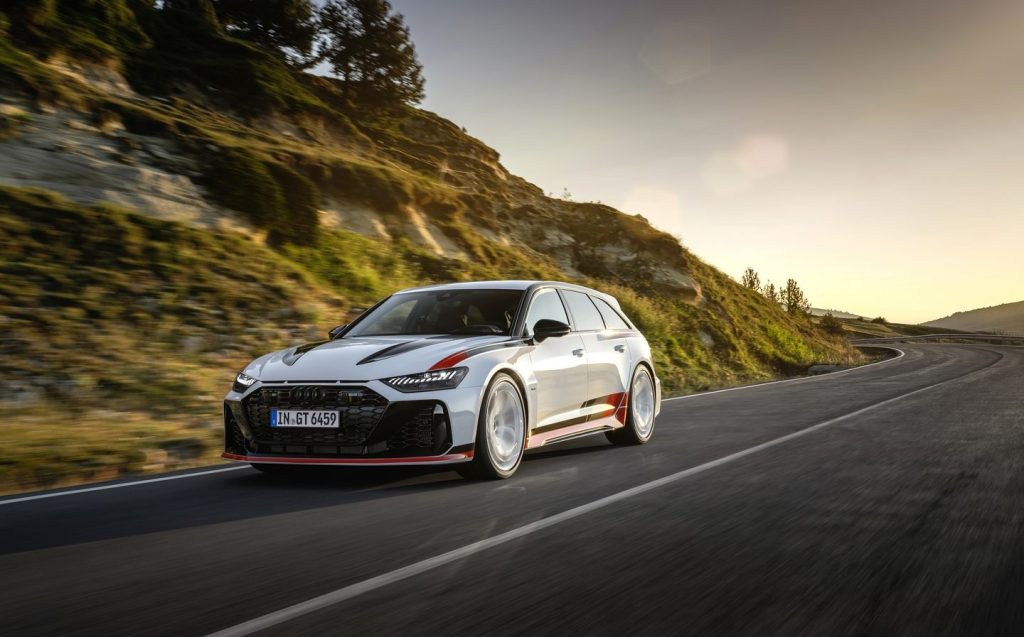
The top speed of the GT is 190mph, as near as makes no difference, and that’s still electronically limited.
However, it’s not the straight-line speed which ought to be the talking point here. Audi Sport has instead focused on making the GT the most dynamically rewarding RS 6 yet seen, and as the current model is a delight to drive as a performance as it is, we’re very keen to see if the GT can live up to this billing.
Chief among the chassis changes is lightweight coilover suspension with three-stage manually adjustable dampers — that means you need to get the spanners out and fiddle with the top mounts to alter the car’s handling/ ride quality balance, rather than simply pressing a button in the cabin.
This is the first time coilovers have been used on the RS 6, although both the RS 4 Avant and RS 5 have benefited from the same technology in recent “competition” packages — which were transformative, in a positive way, for those vehicles’ handling.
For those who feel this coilover suspension, which lowers the ride height by 10mm, is too much for use on the road, they’ll be pleased to know Audi will offer the GT with RS Sport suspension with Dynamic Ride Control, or full RS Adaptive Air suspension as optional alternatives.
Quattro diff for rear-driven feel
Similarly, the RS 6 GT gains the rear-axle-mounted quattro sport differential, which aims to promote a rear-driven feel. This is tuned specifically for the GT and again takes its lead from the RS 4 and RS 5 competition models, which had the same set-up.
That rear diff pairs with the latest locking centre differential, which the GT shares with the RS 6 performance, producing a rear-biased torque split of 40:60 in normal operation.
Under duress, a maximum of 70 per cent torque goes to the front axle, or alternatively 85 per cent can flow to the Audi’s rear wheels.
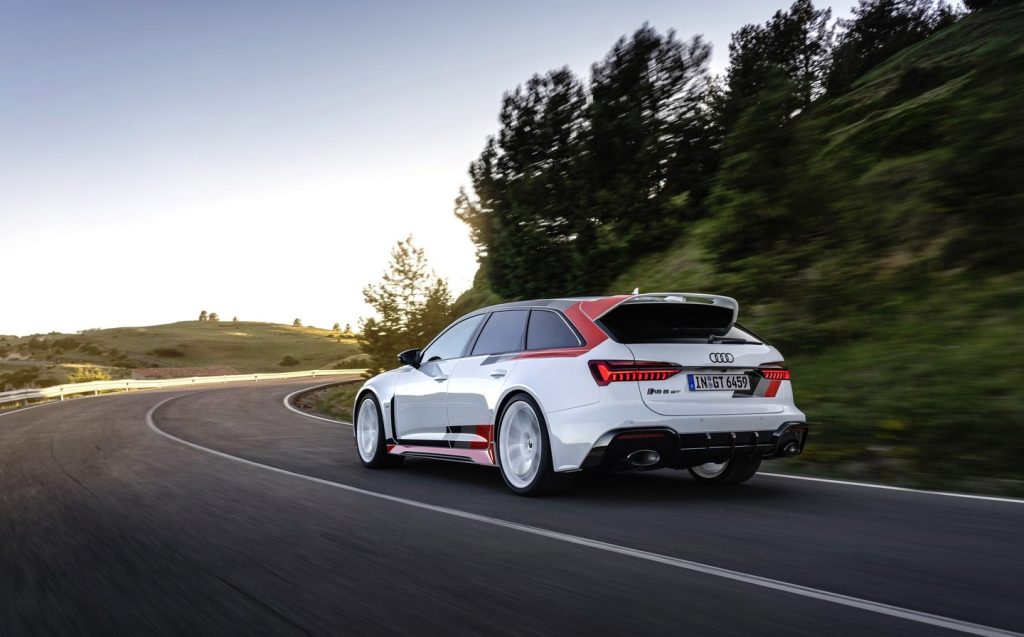
A final touch that Audi Sport’s engineers have added to help quell any understeer — that’s the undesirable feeling of the car heading straight on, even when the front wheels are turned to a significant degree — is the fitment of Continental SportContact 7 tyres, which are claimed to have greater grip in both wet and dry conditions.
The Audi RS 6 GT should go on sale into the second quarter of 2024. As already stated, less than ten per cent of the global production run will come to the UK, guaranteeing the GT comes with much-coveted rarity status.
Related articles
- If you were interested in the Audi RS 6 GT, you might like to read about another special edition, the Audi e-tron GT Dakar
- Have you seen the interior of the 2024 Audi Q6 e-tron?
- Make sure you check out the massive Audi Urbansphere concept car
Latest articles
- Aston Martin Valkyrie AMR-LMH hypercar hits track ahead of 2025 Le Mans challenge
- Porsche has begun testing the electric Cayenne
- Cupra Leon 272 eHybrid 2024 review: Bigger battery, better tech … but is it a Cupra?
- Porsche 911 GTS 2024 review: Hybrid heresy or more Stuttgart genius?
- Extended test: 2023 Vauxhall Astra Sports Tourer GS PHEV
- Ford Capri revival has faced a lot of flak… but are buyers put off? Here’s what visitors to the Festival of Speed had to say
- F1 2024 calendar and race reports: What time the next grand prix starts and what happened in the previous rounds
- ‘No timeframe’ for how long Volvo’s returning estate cars will be on sale in UK
- Kia Picanto 2024 review: Updates add spice to cute Korean city car


